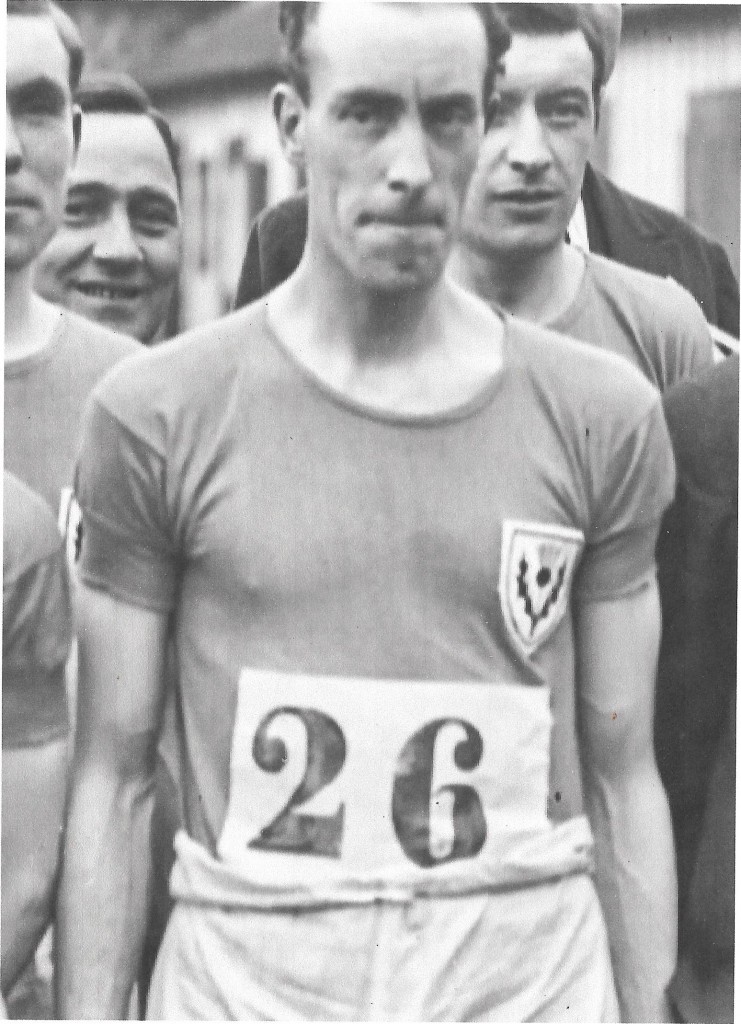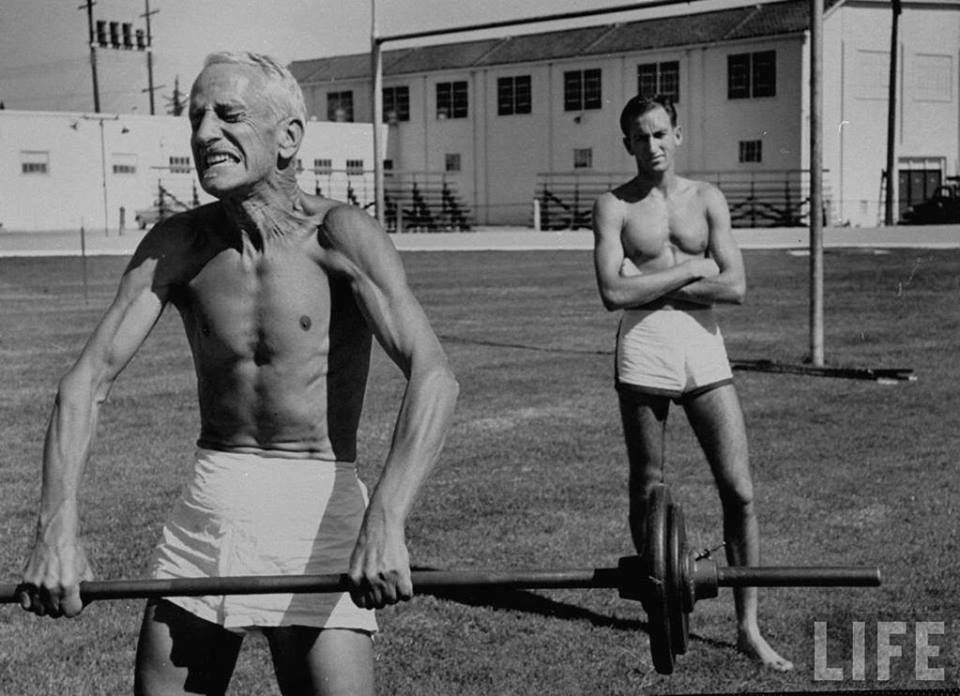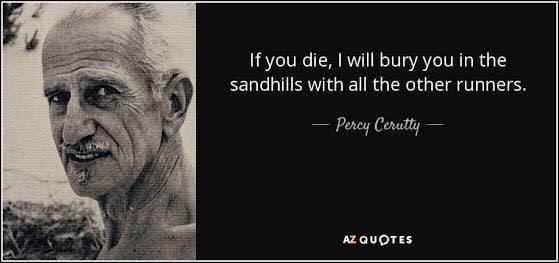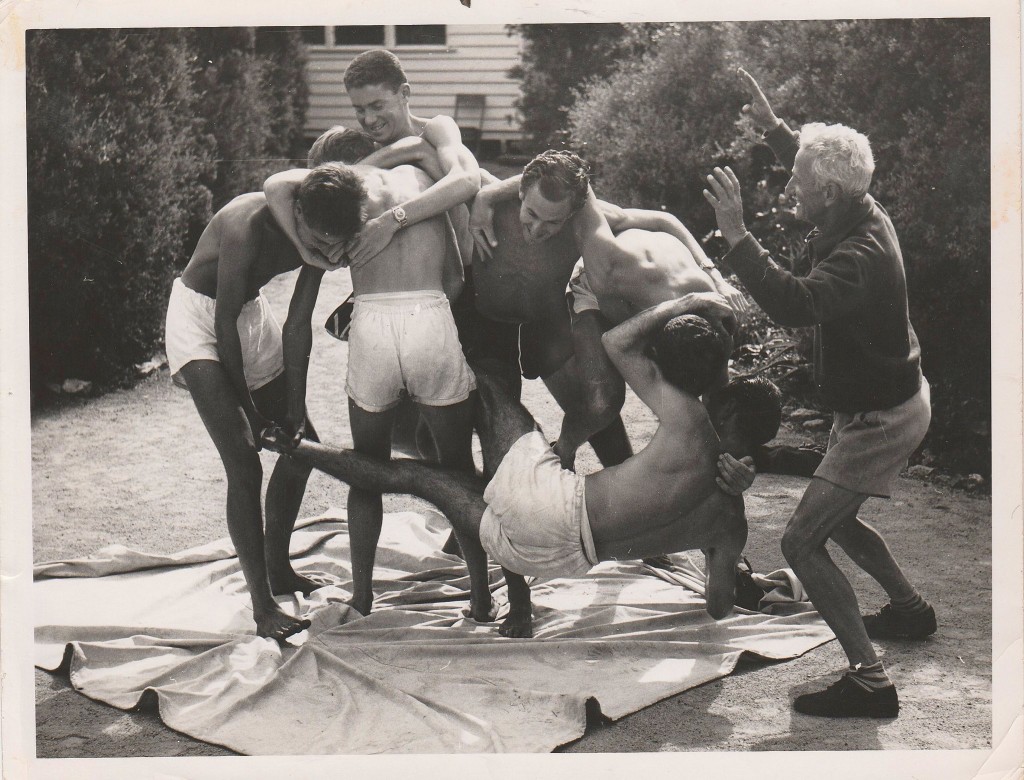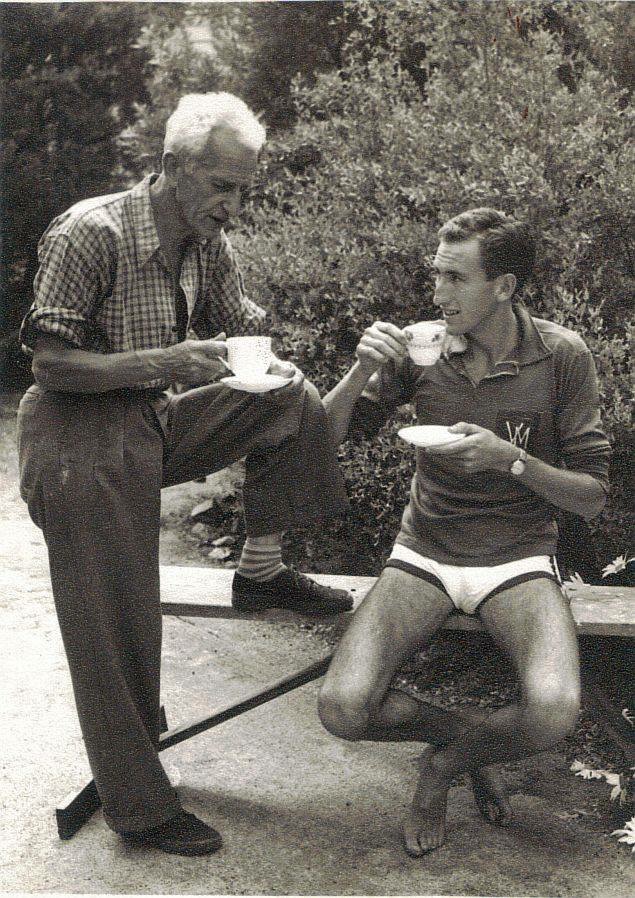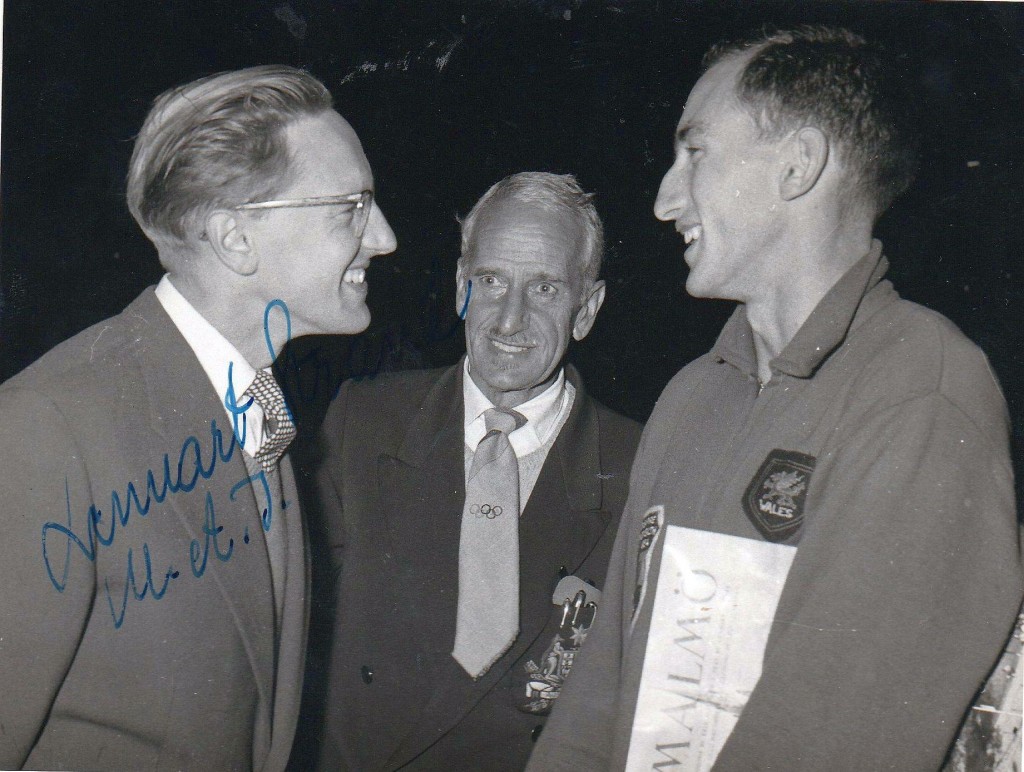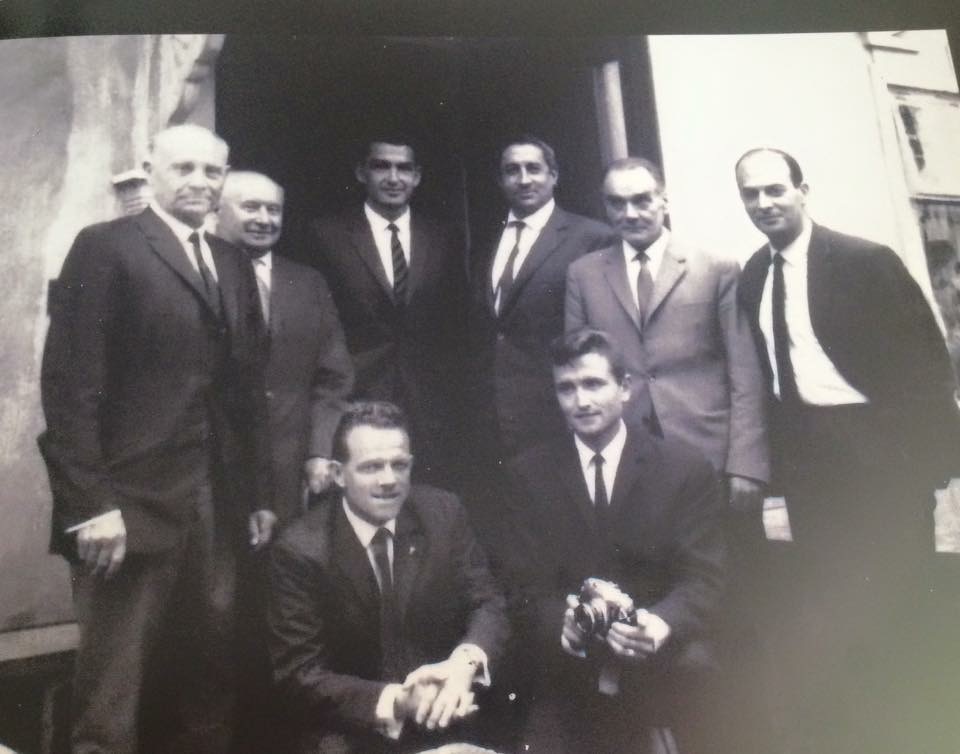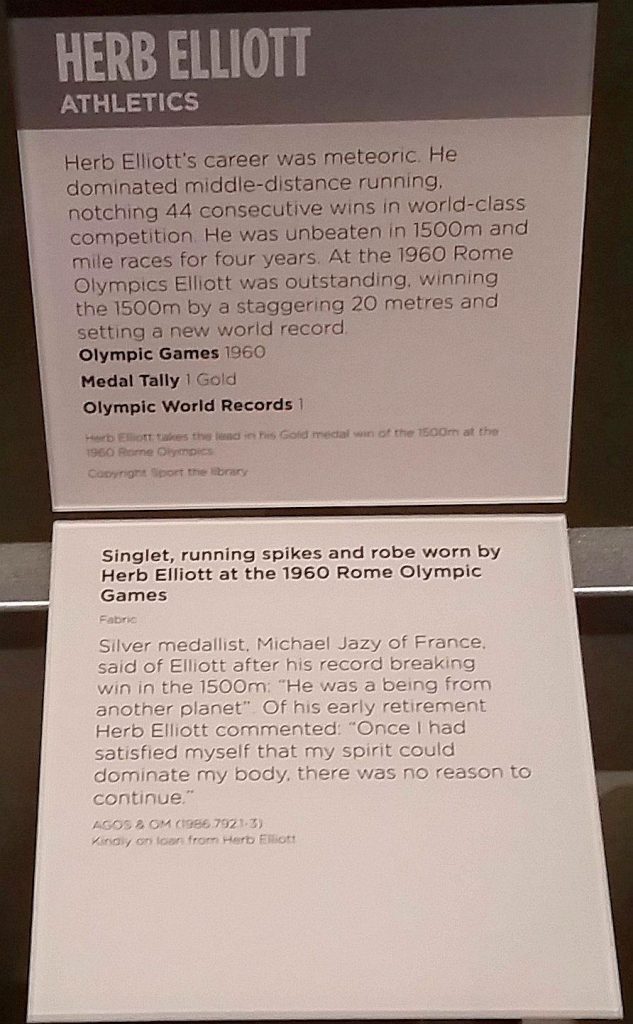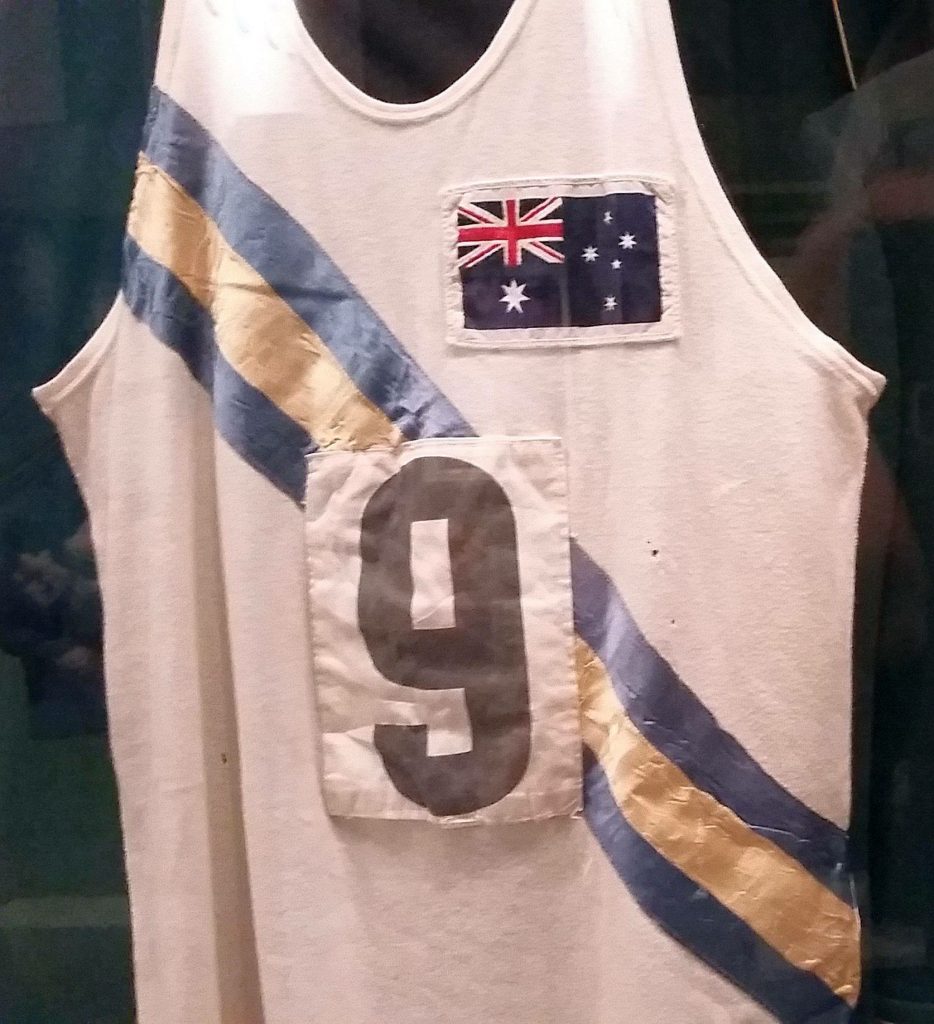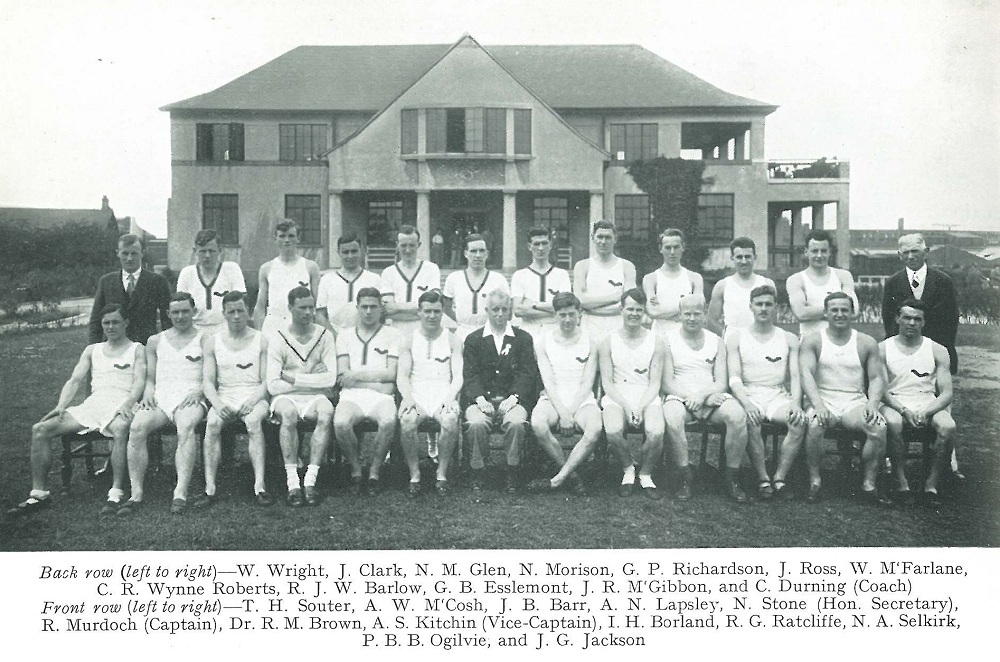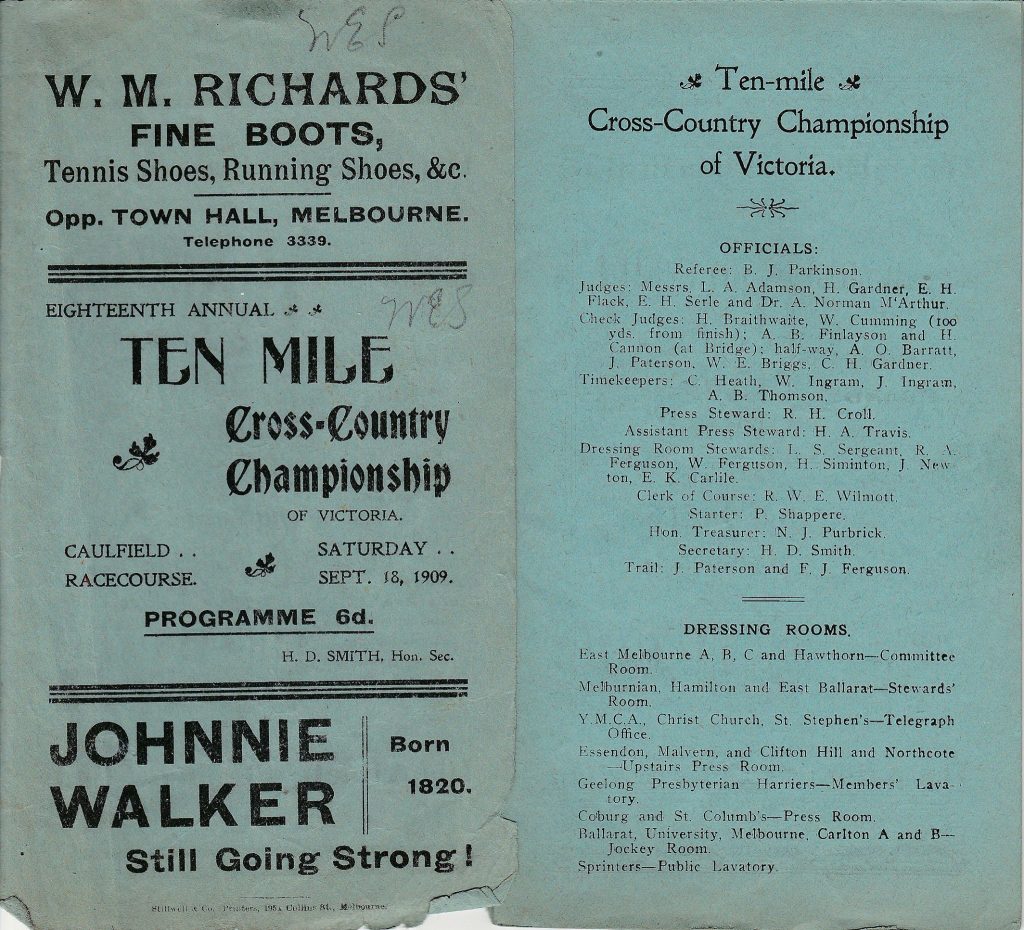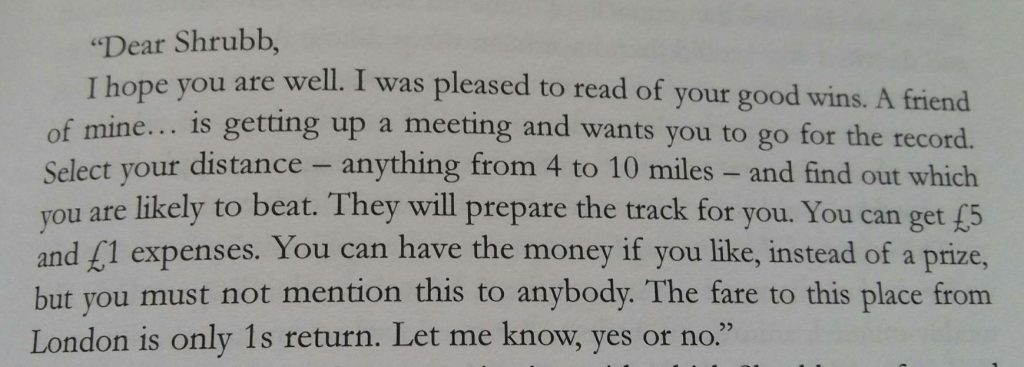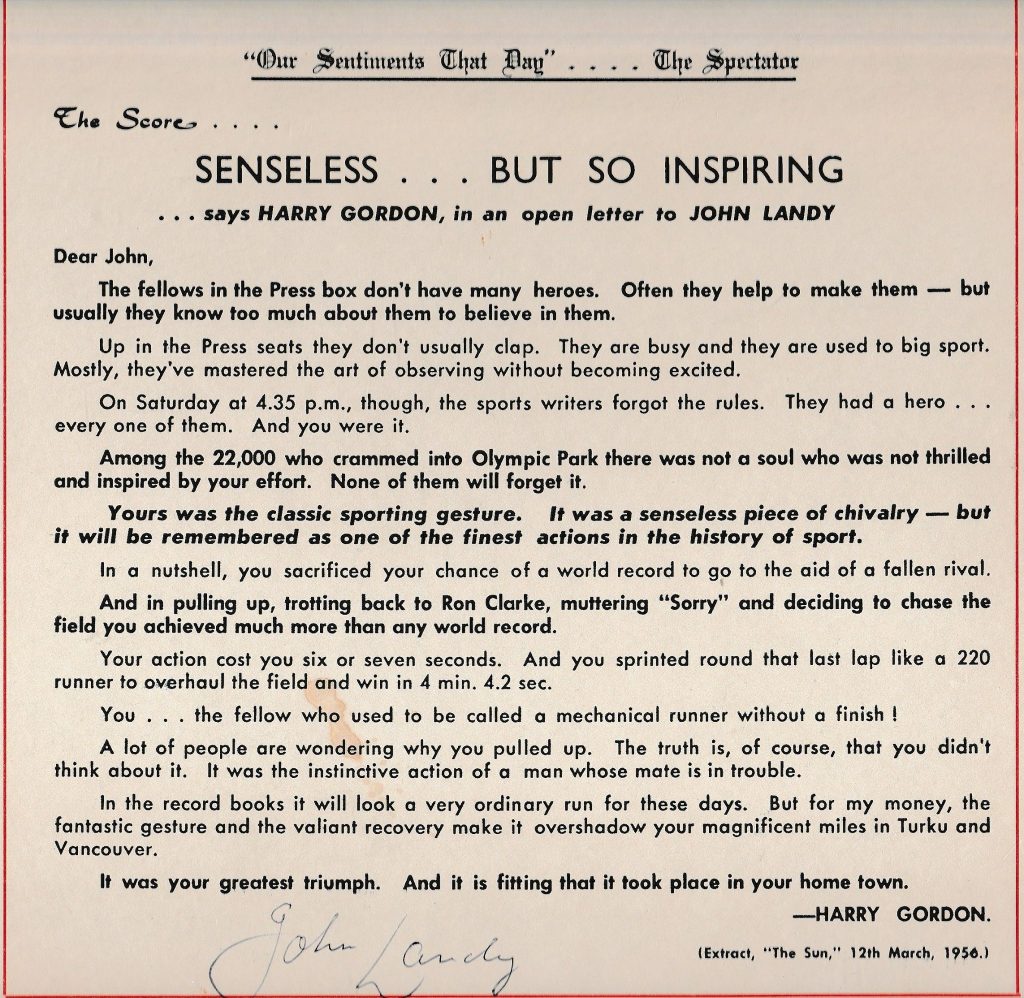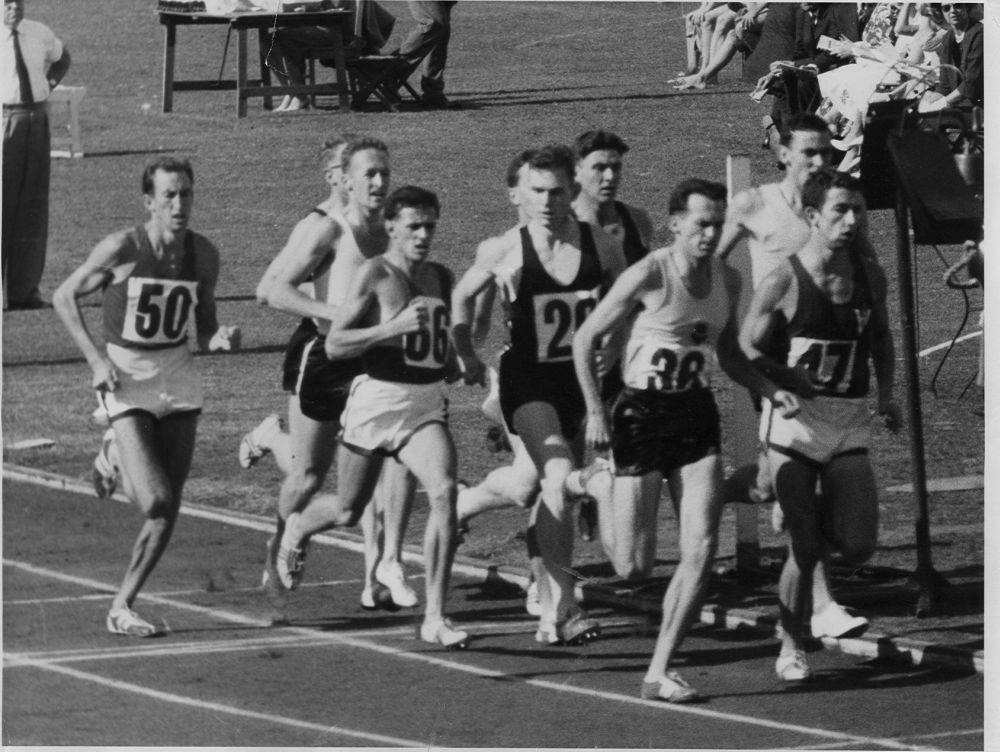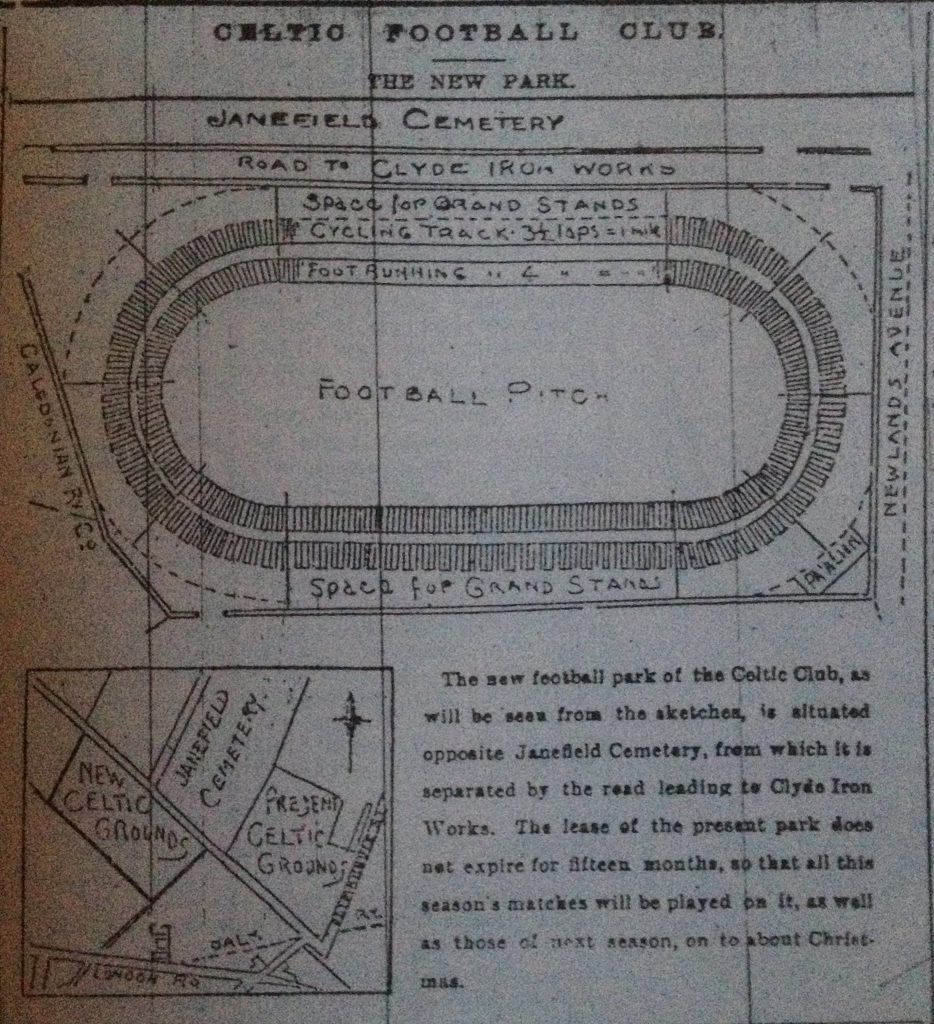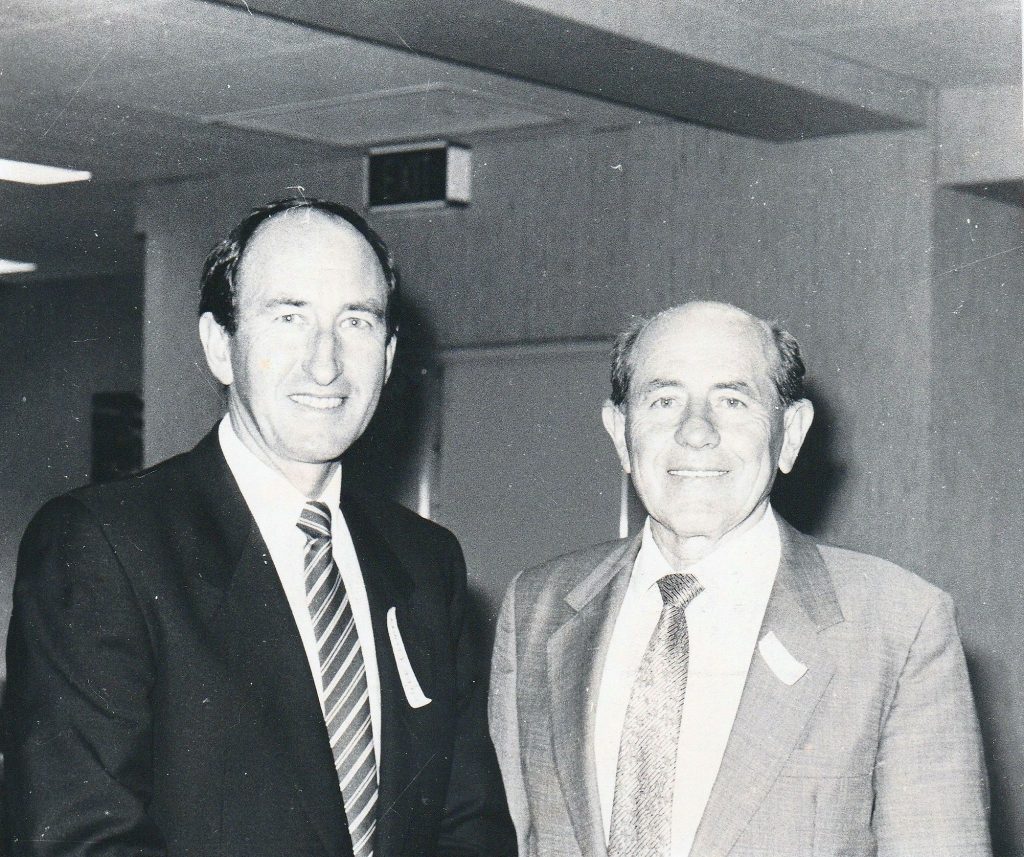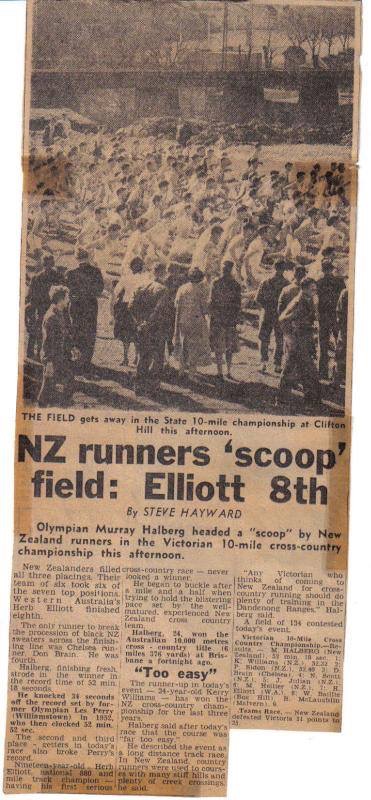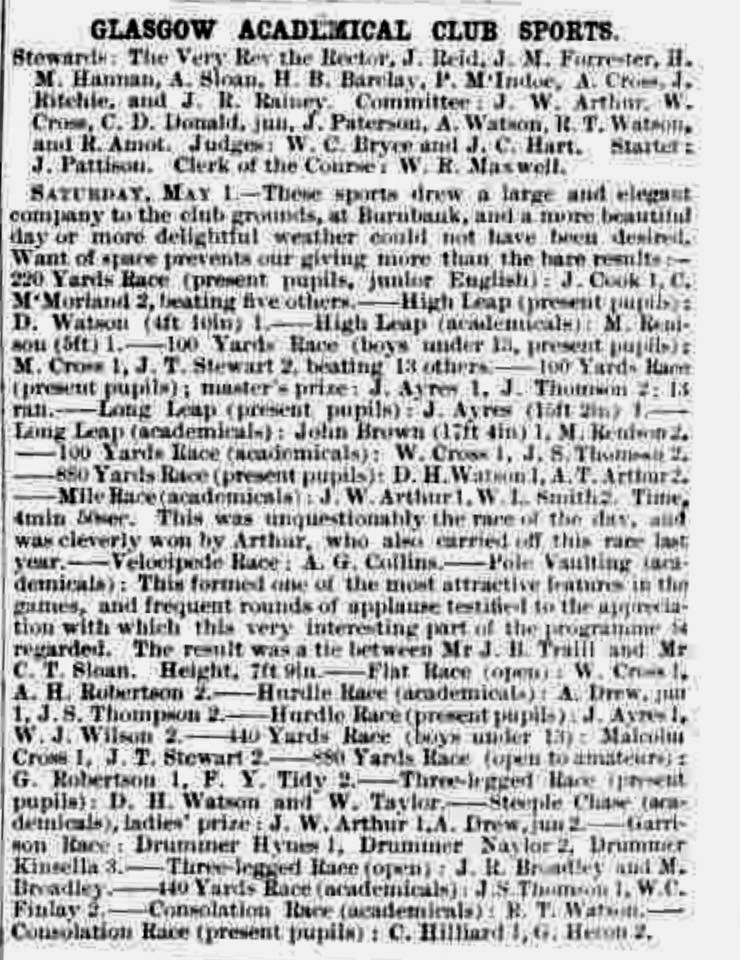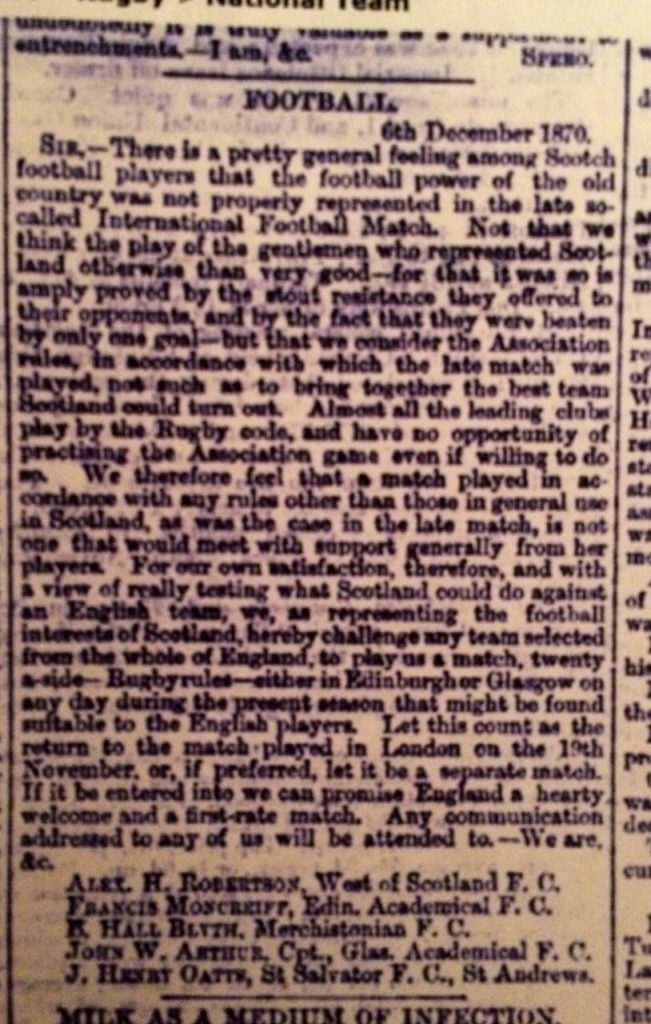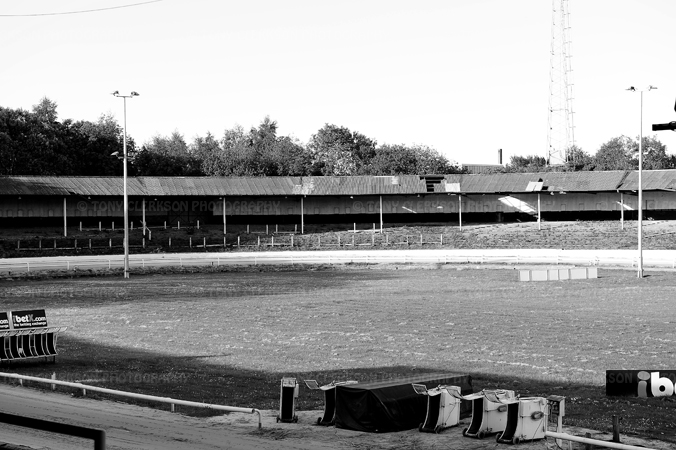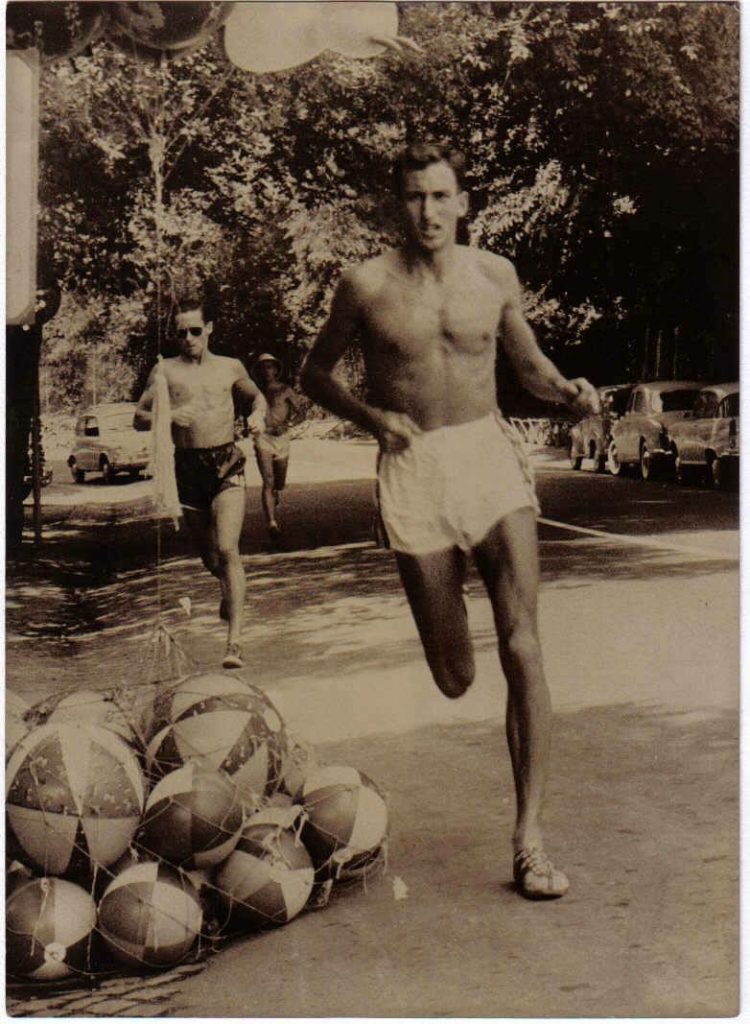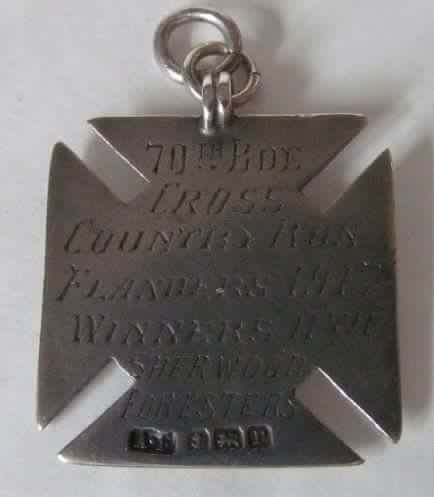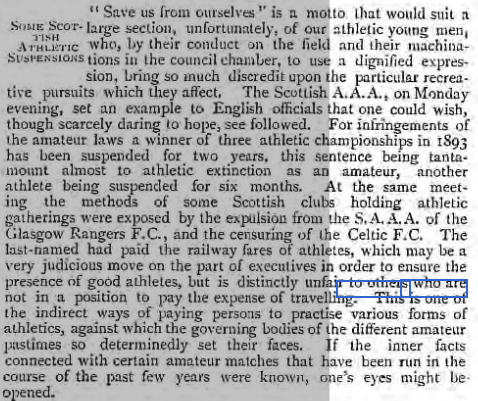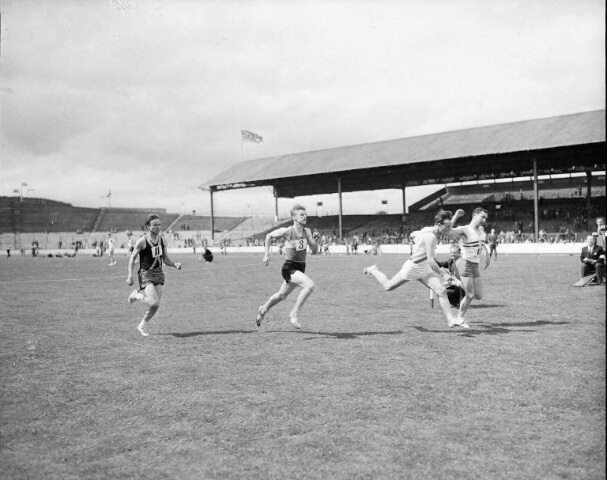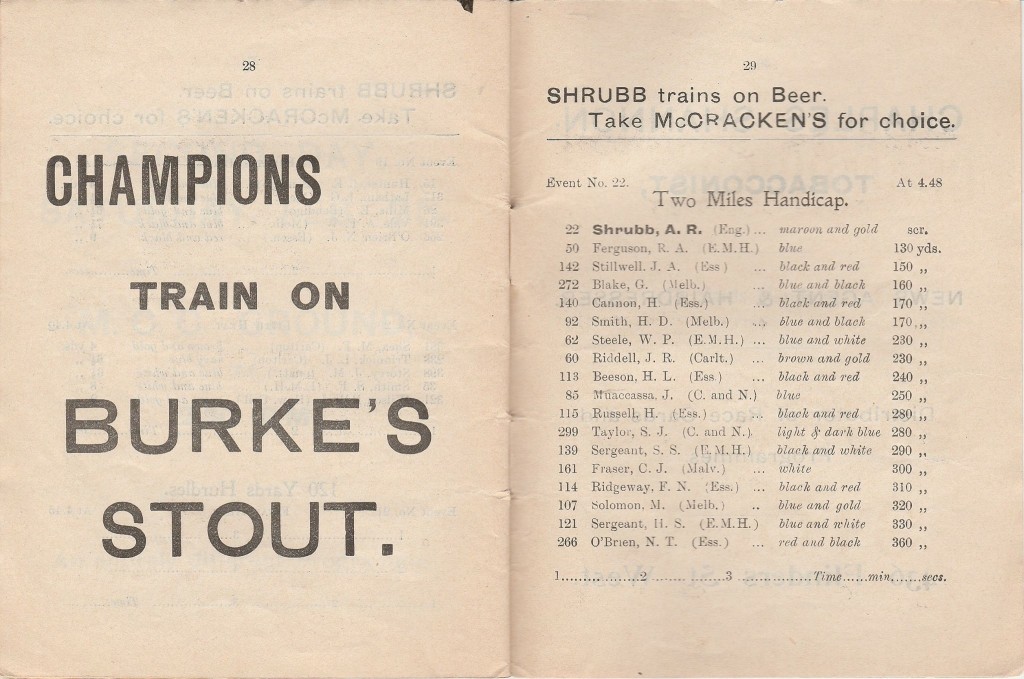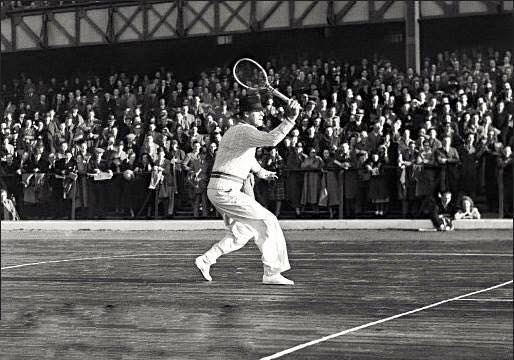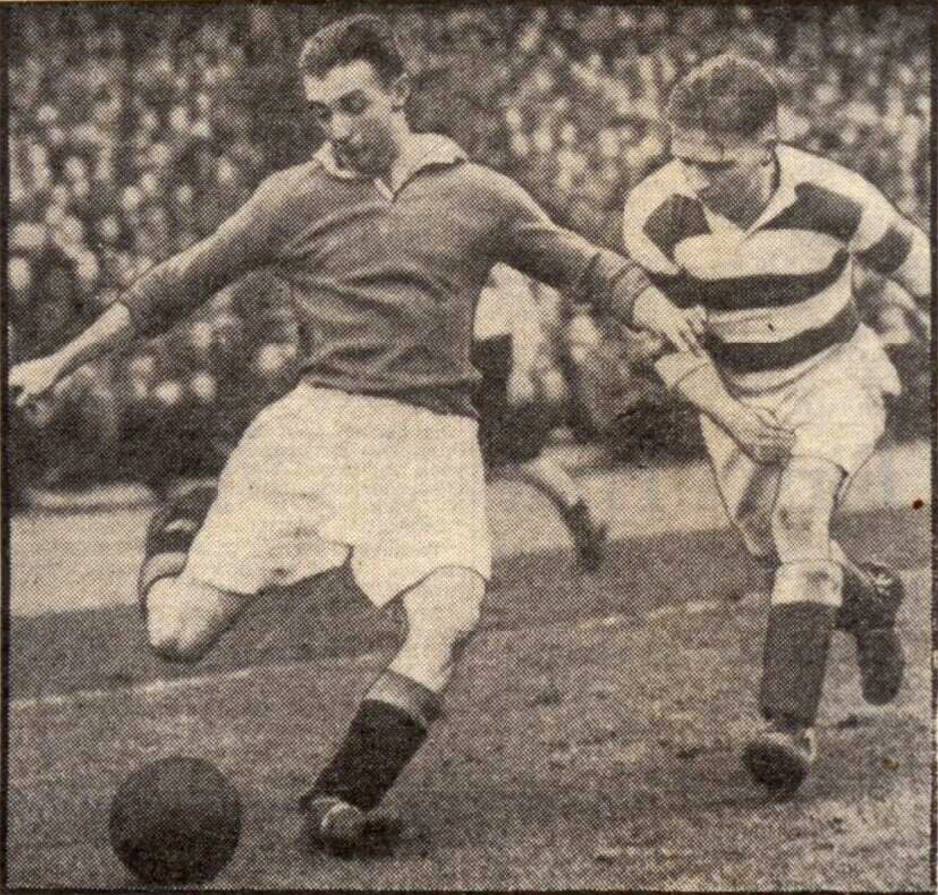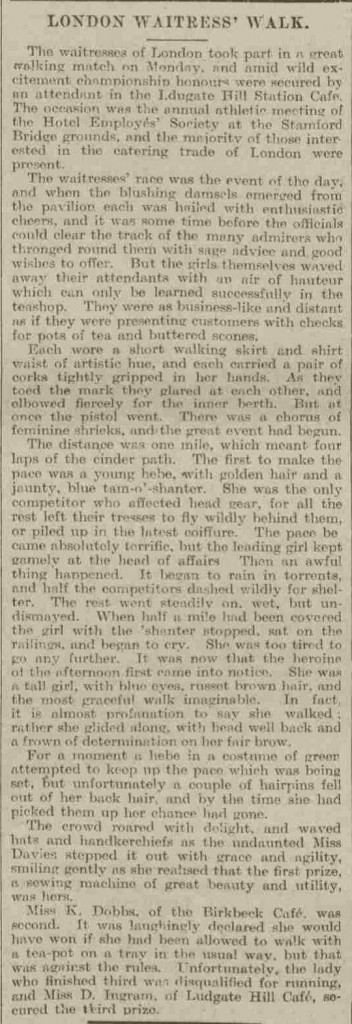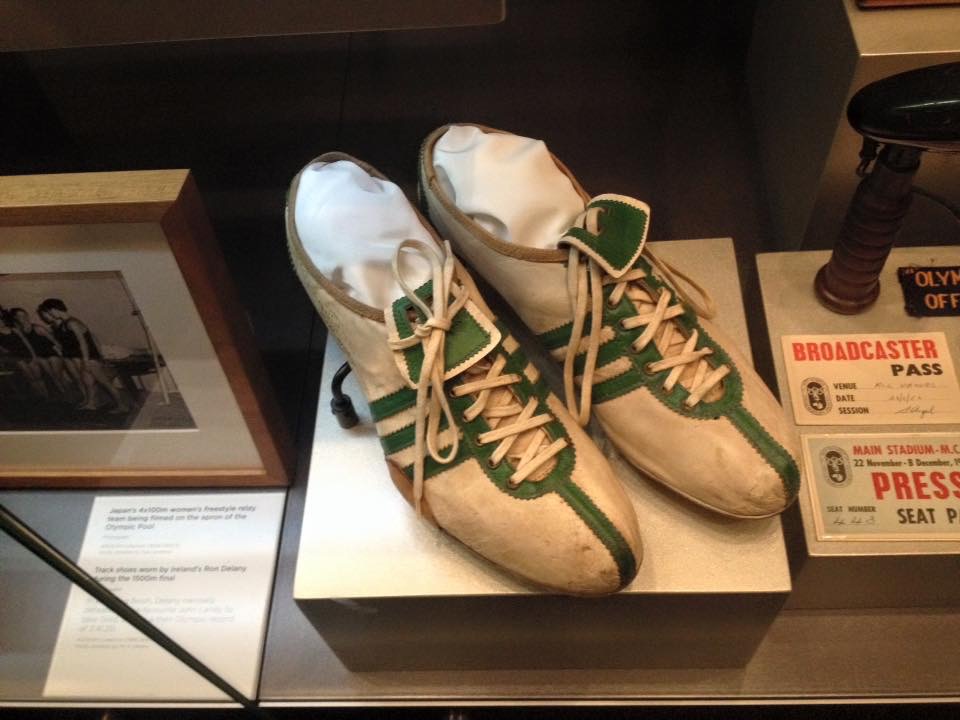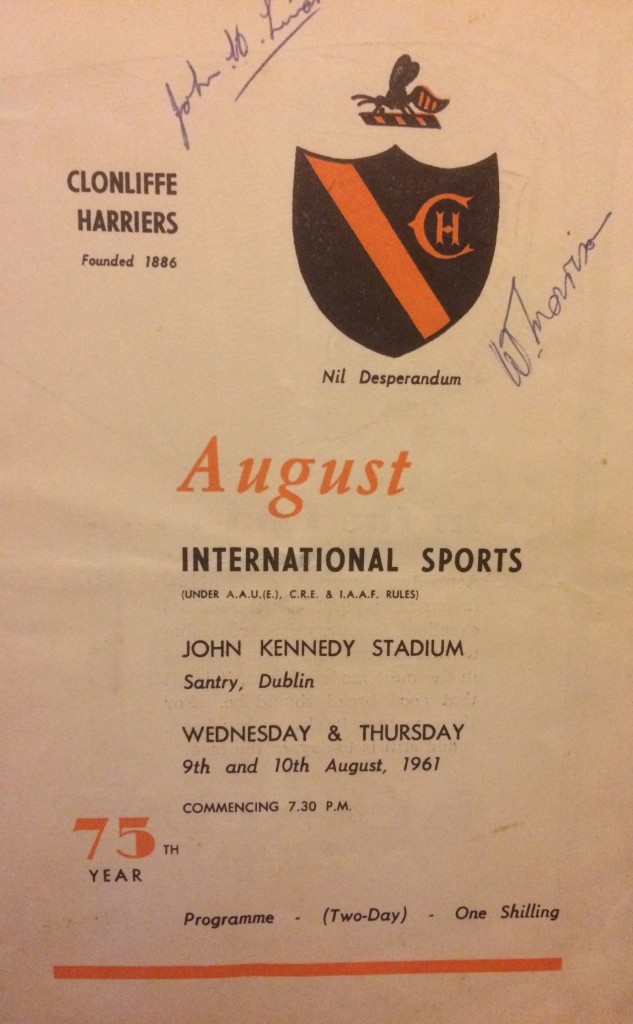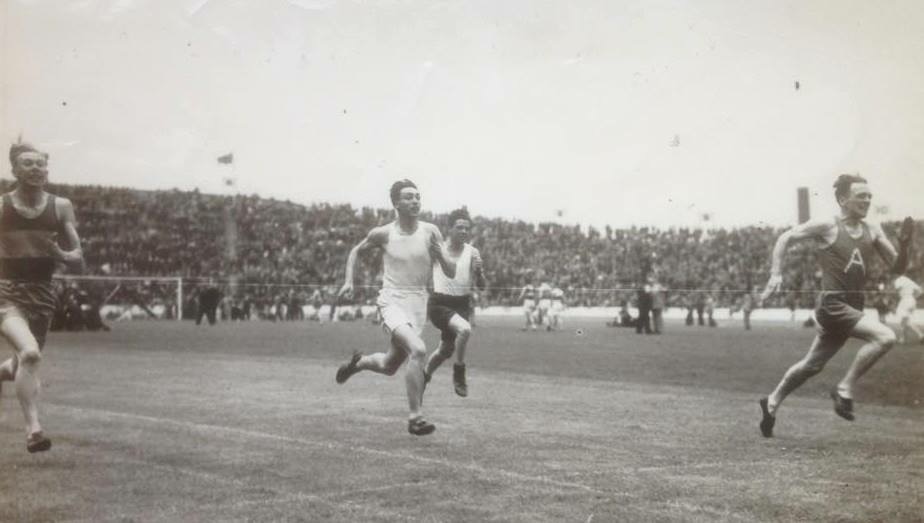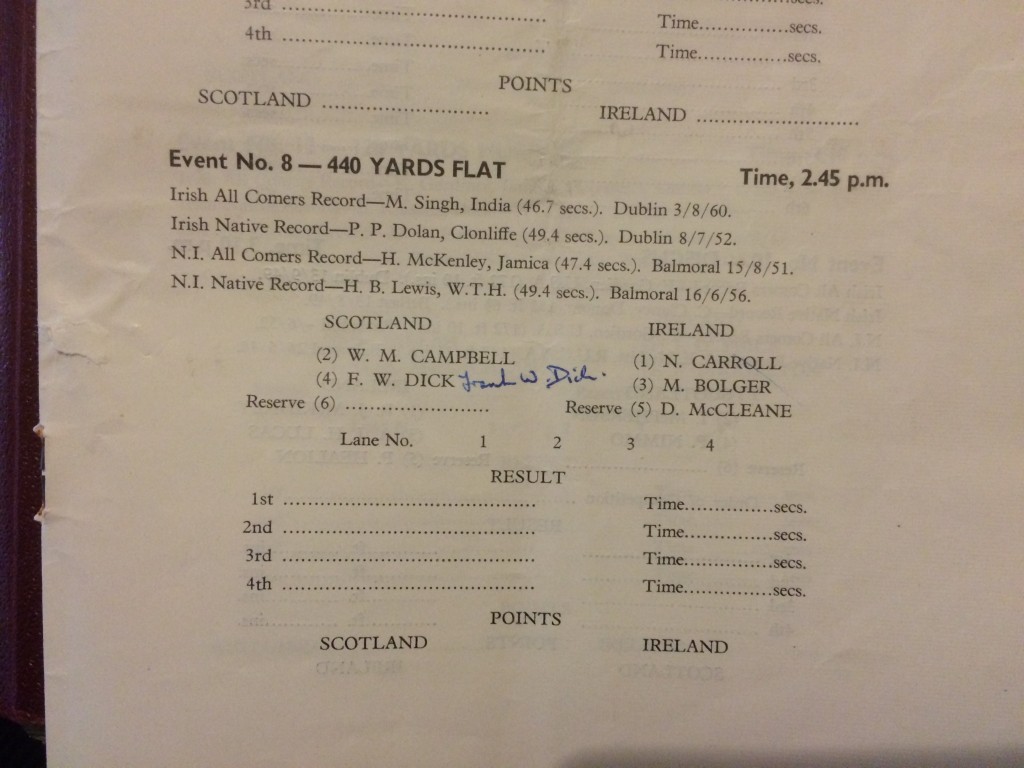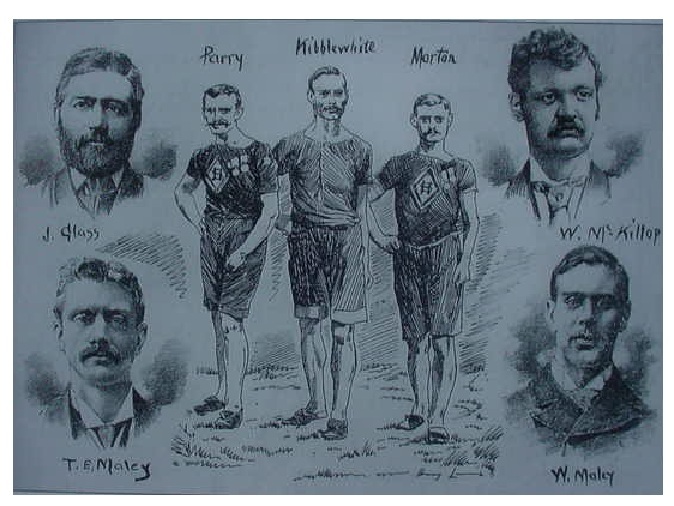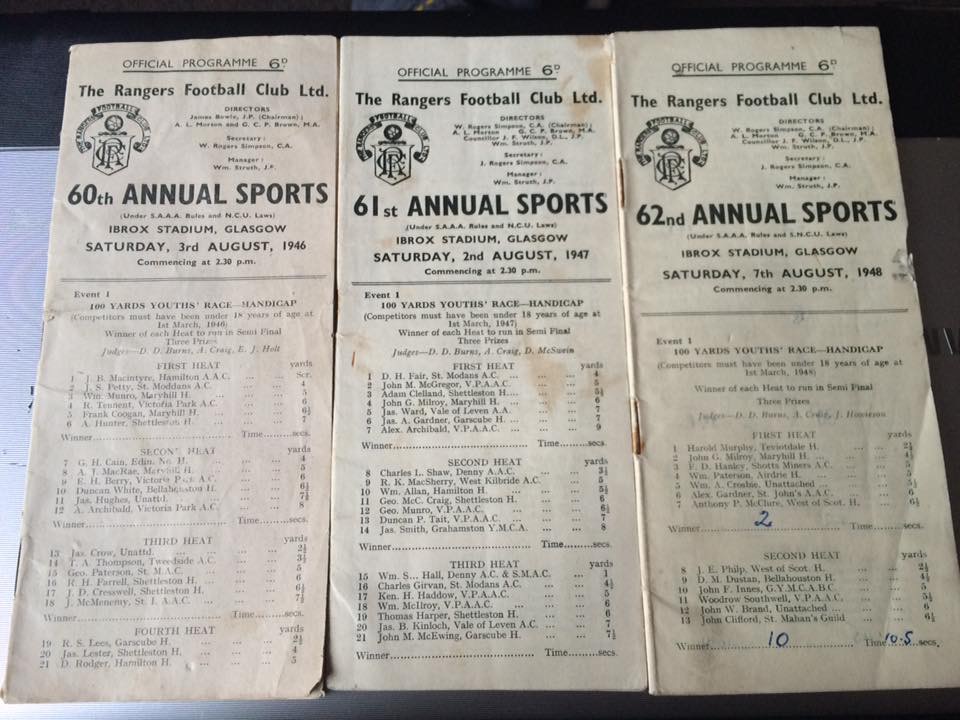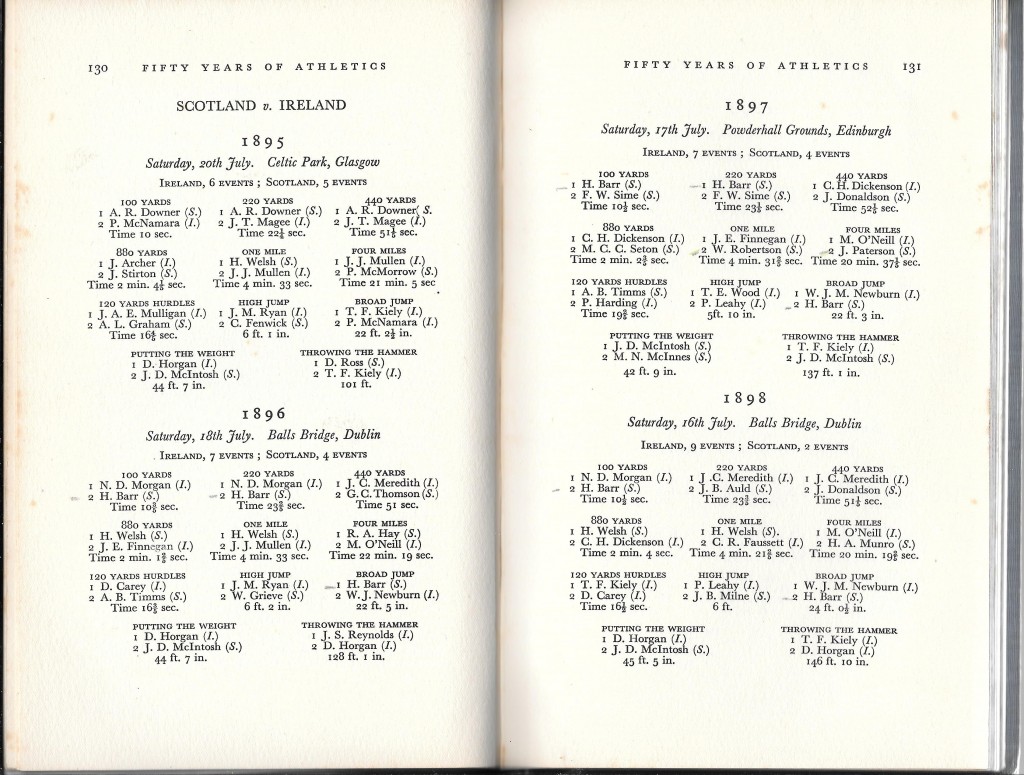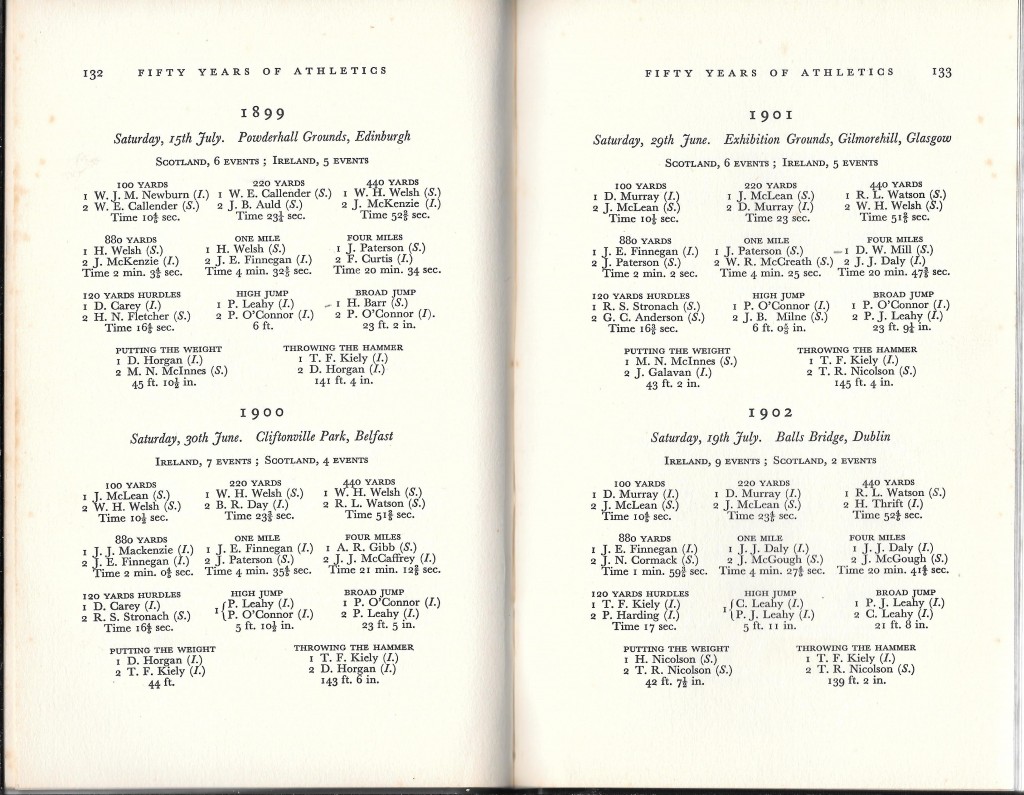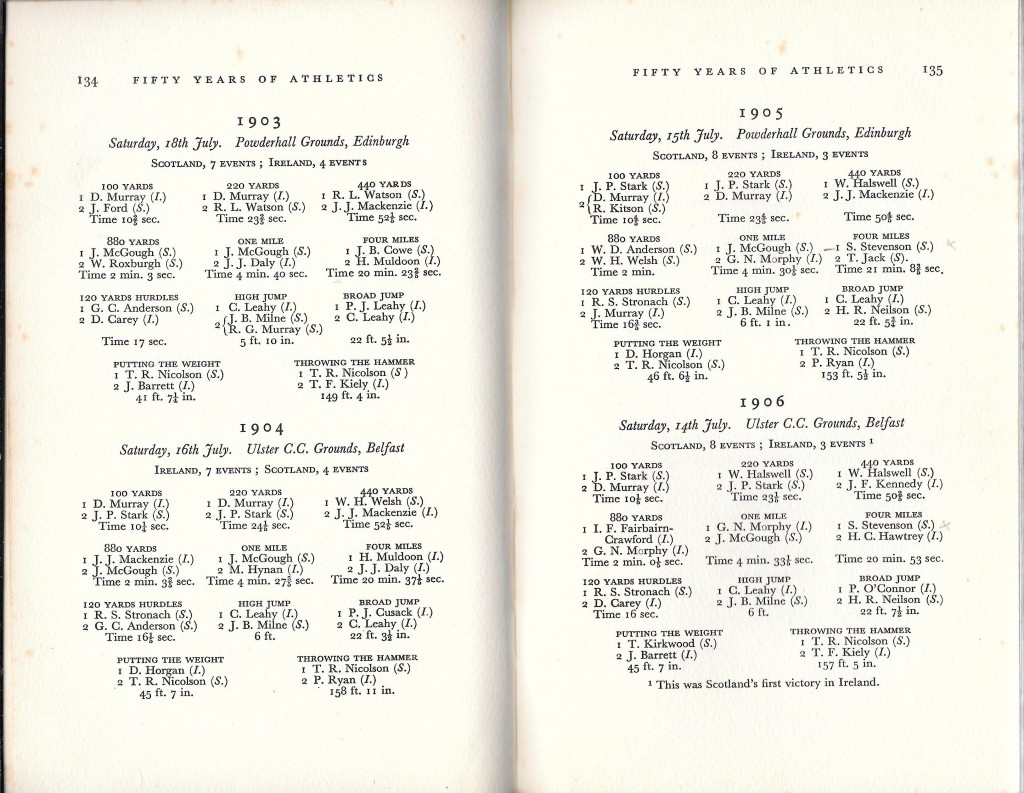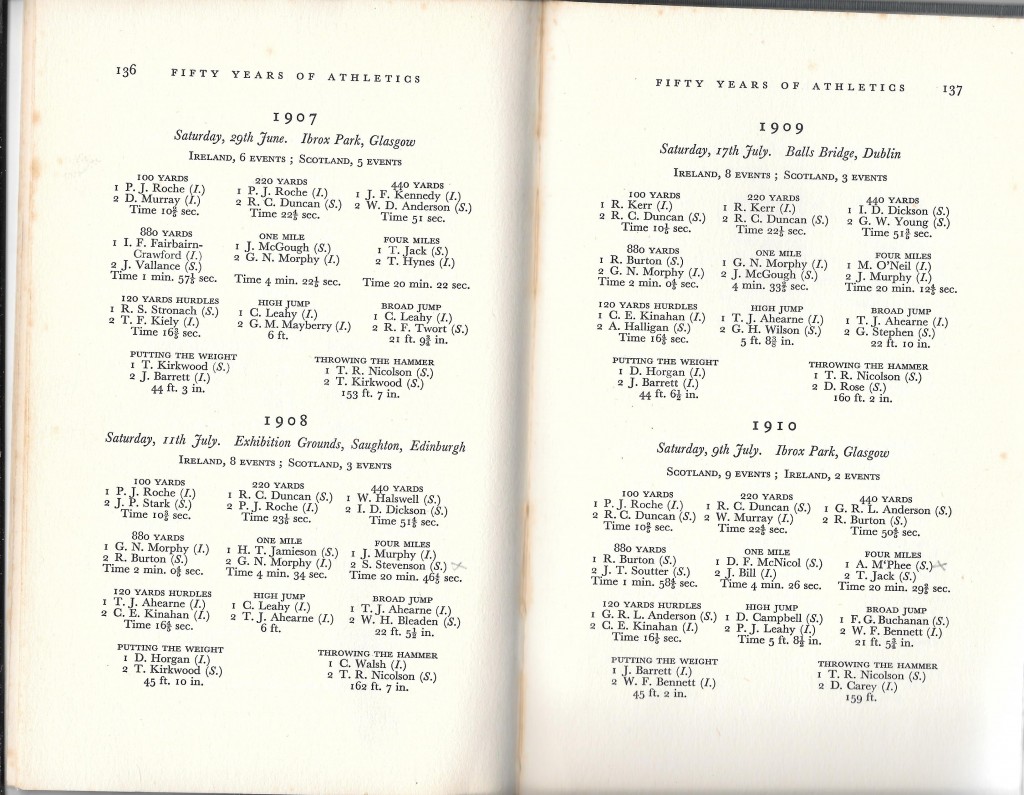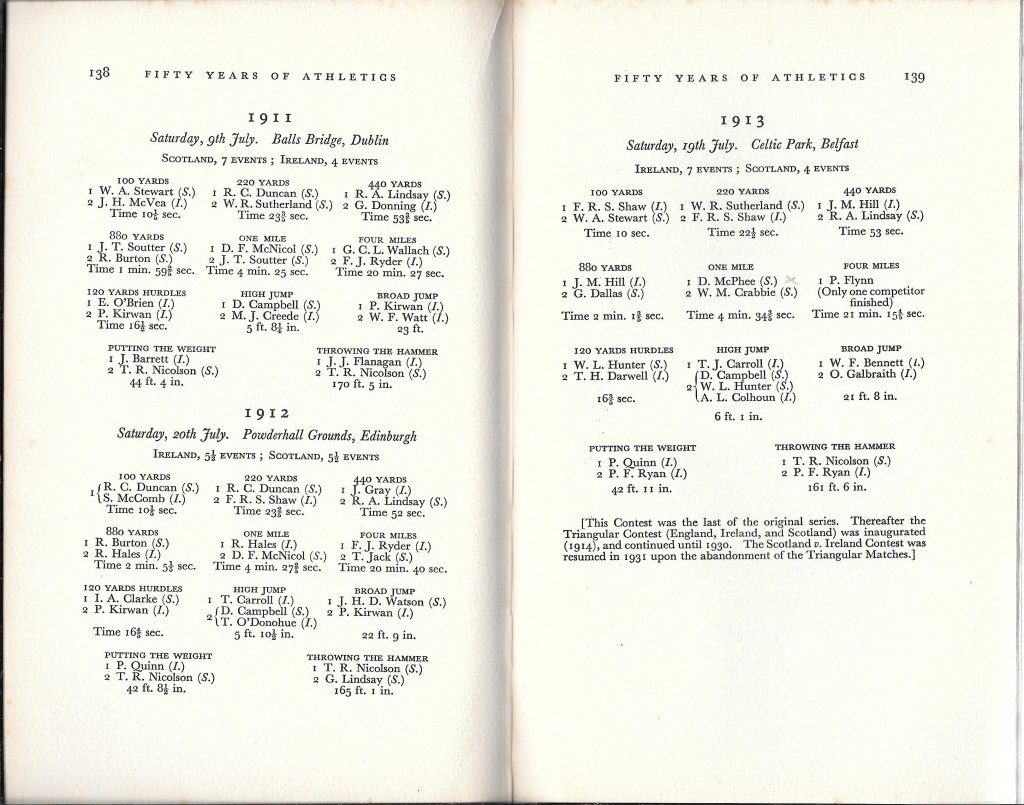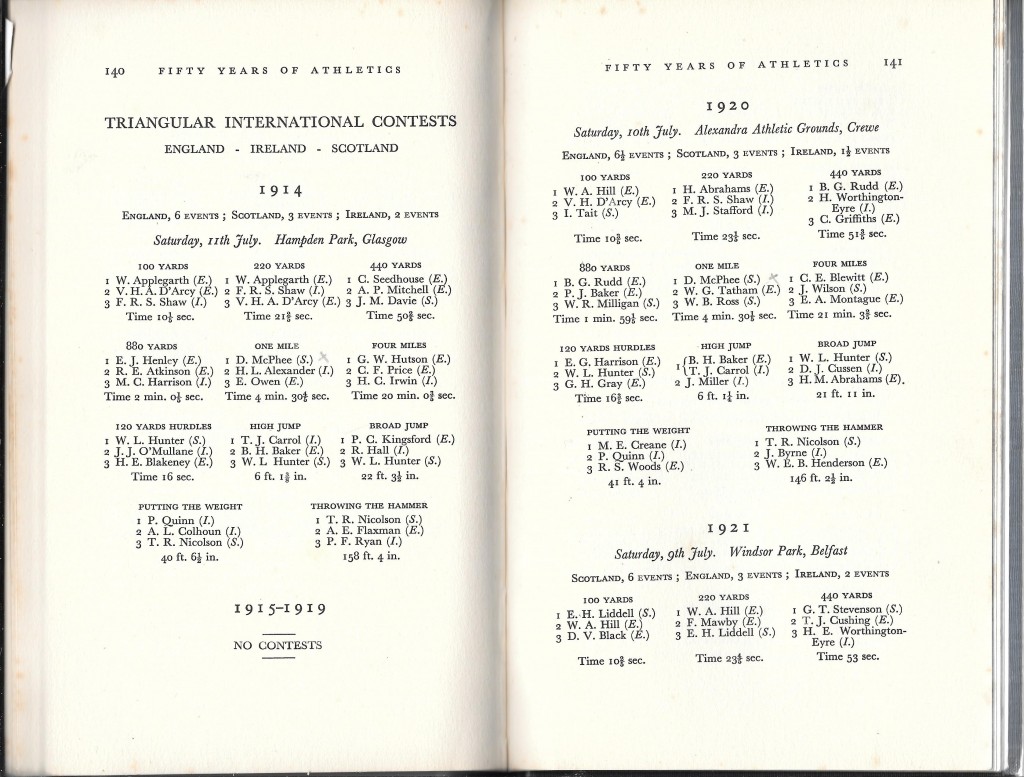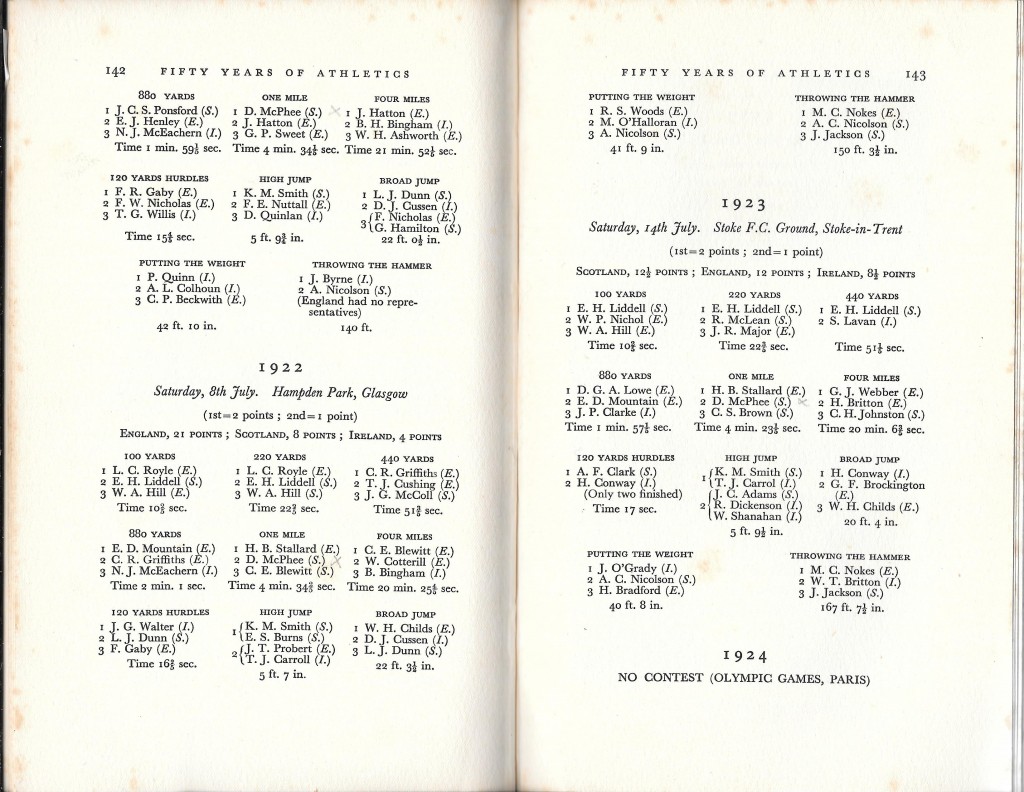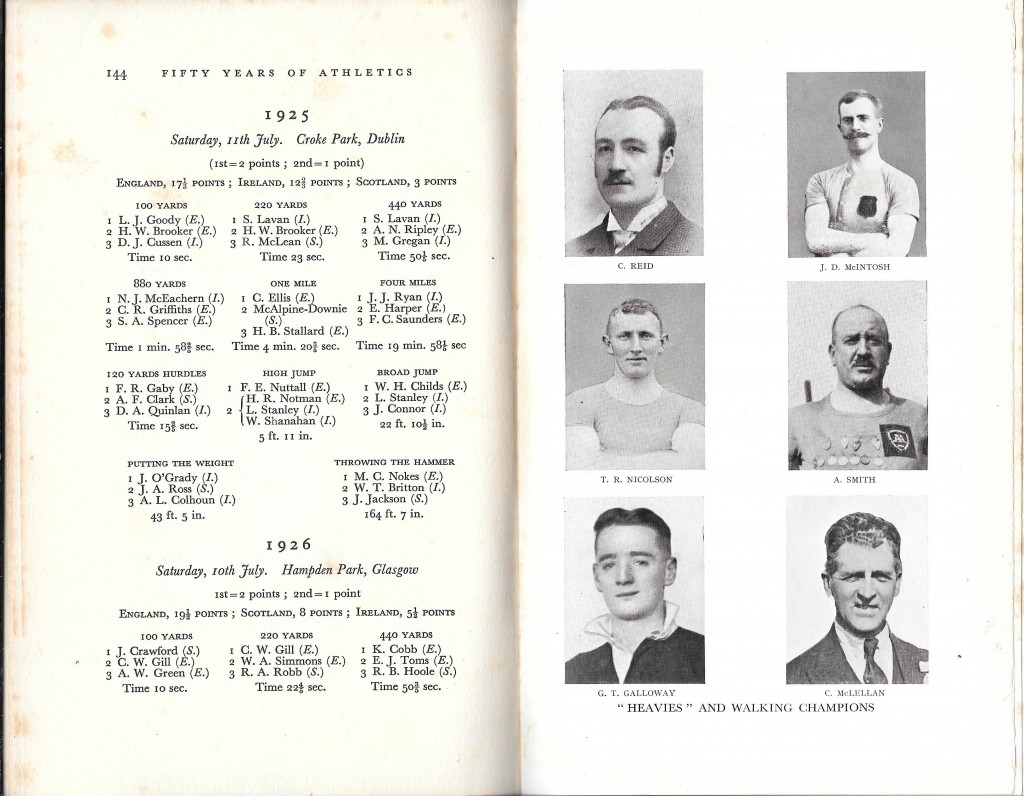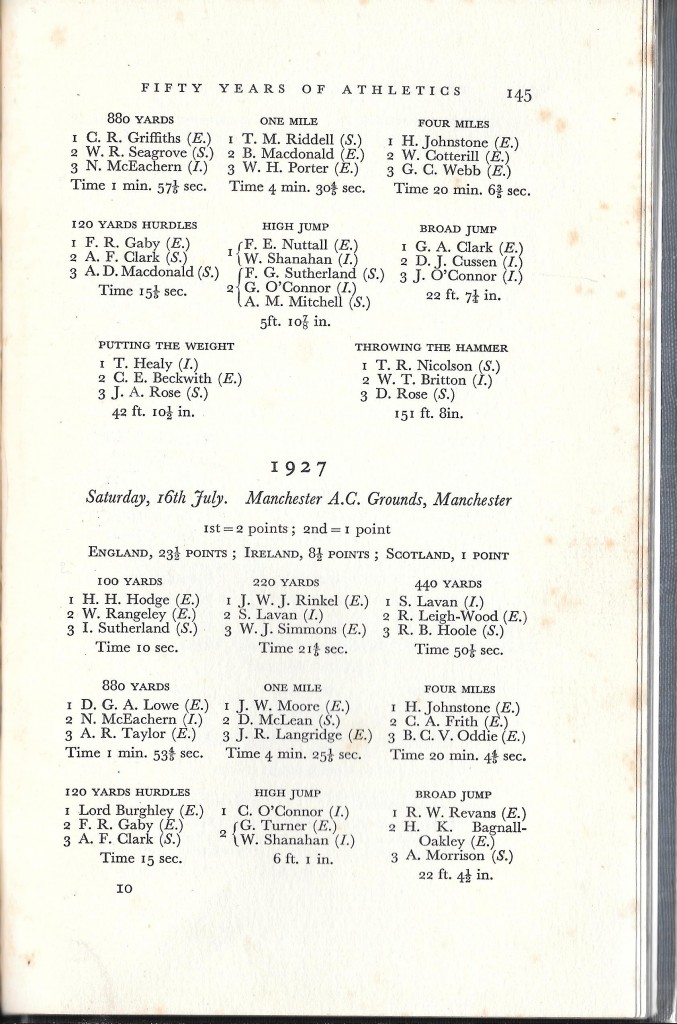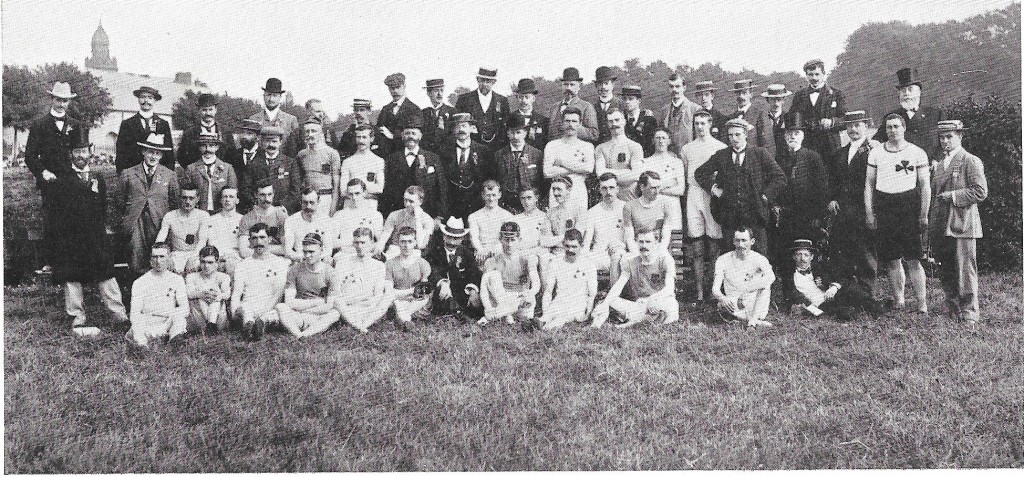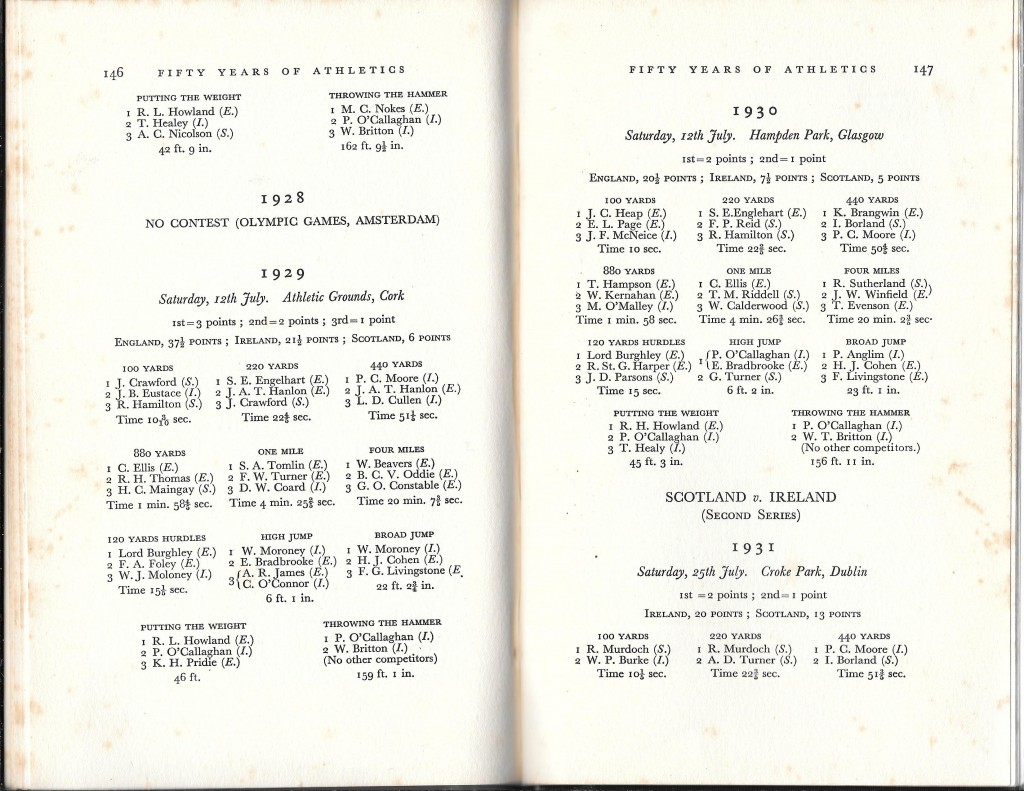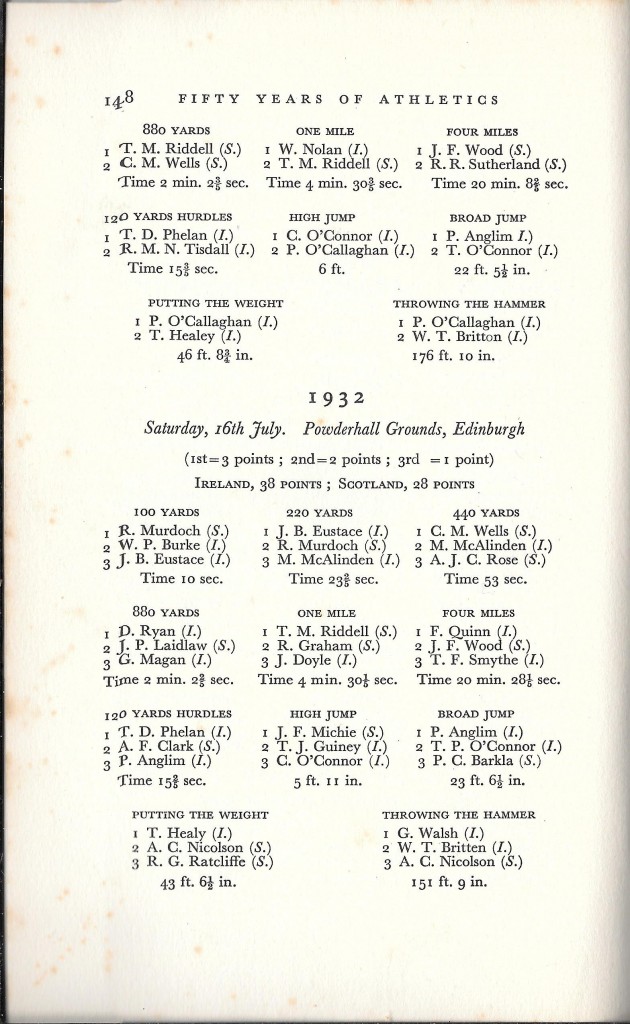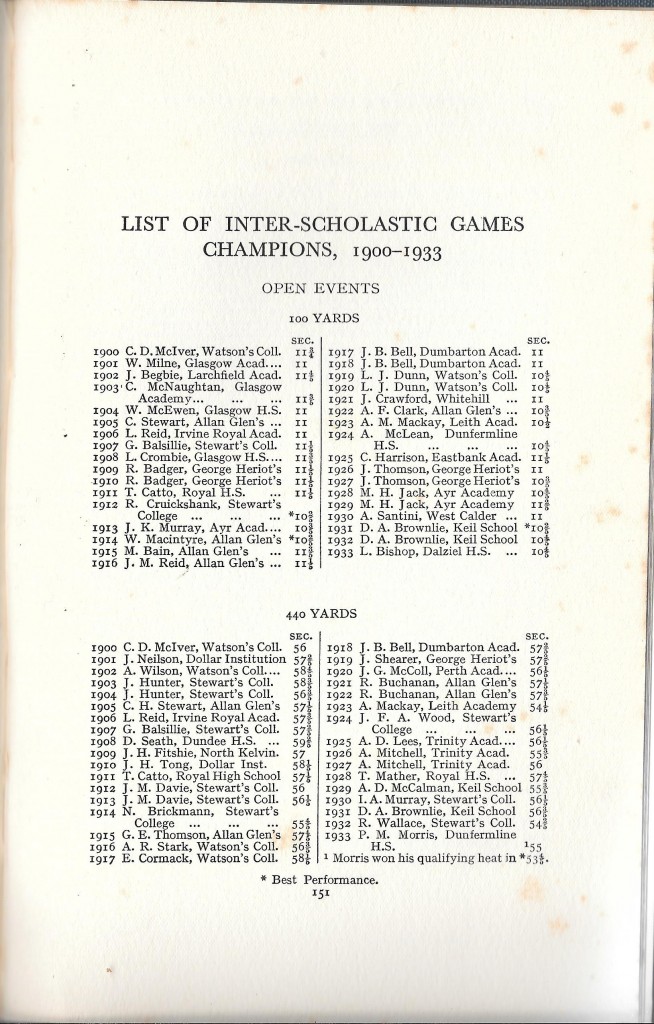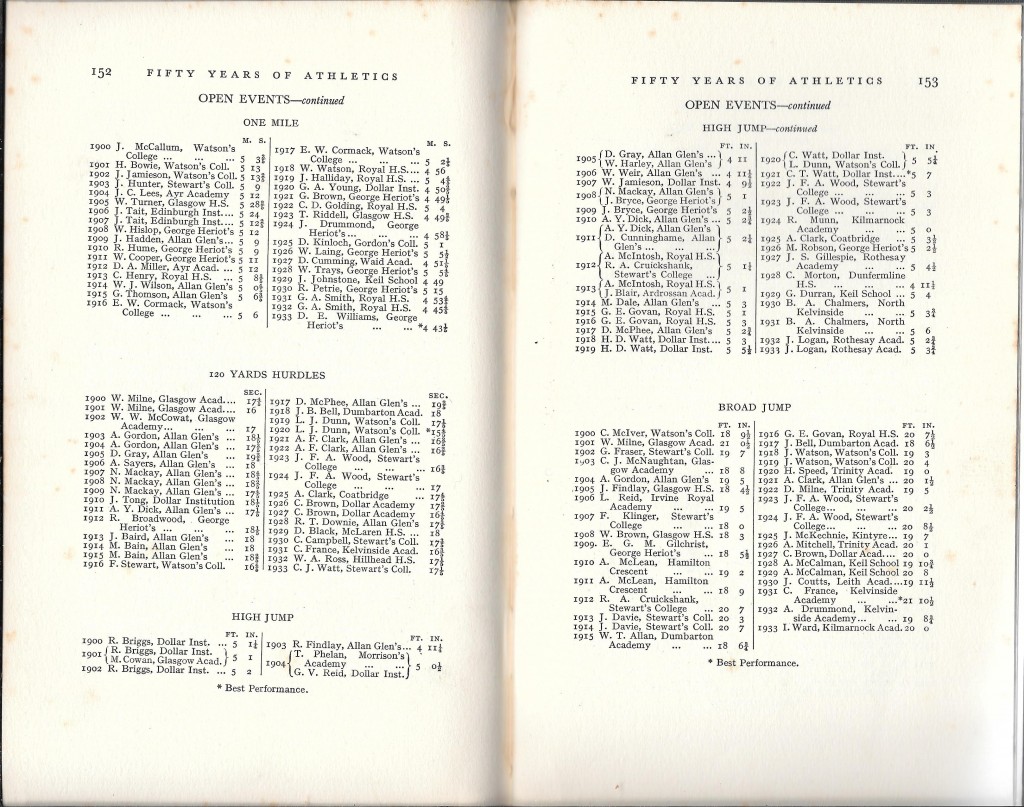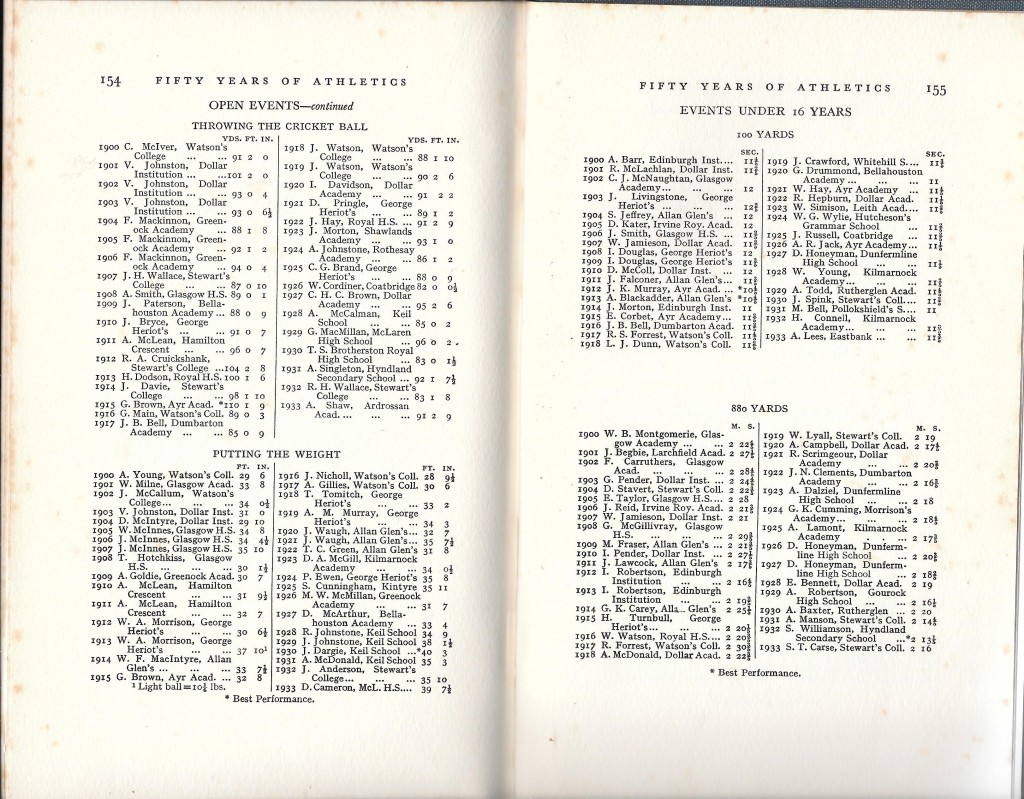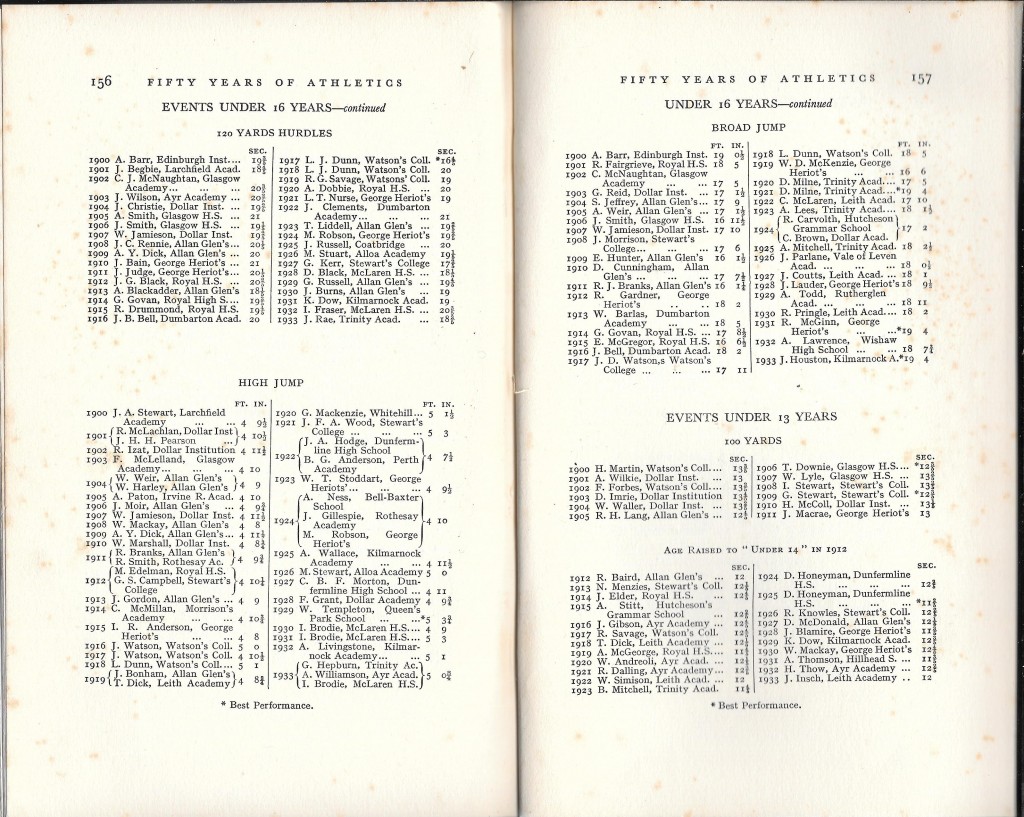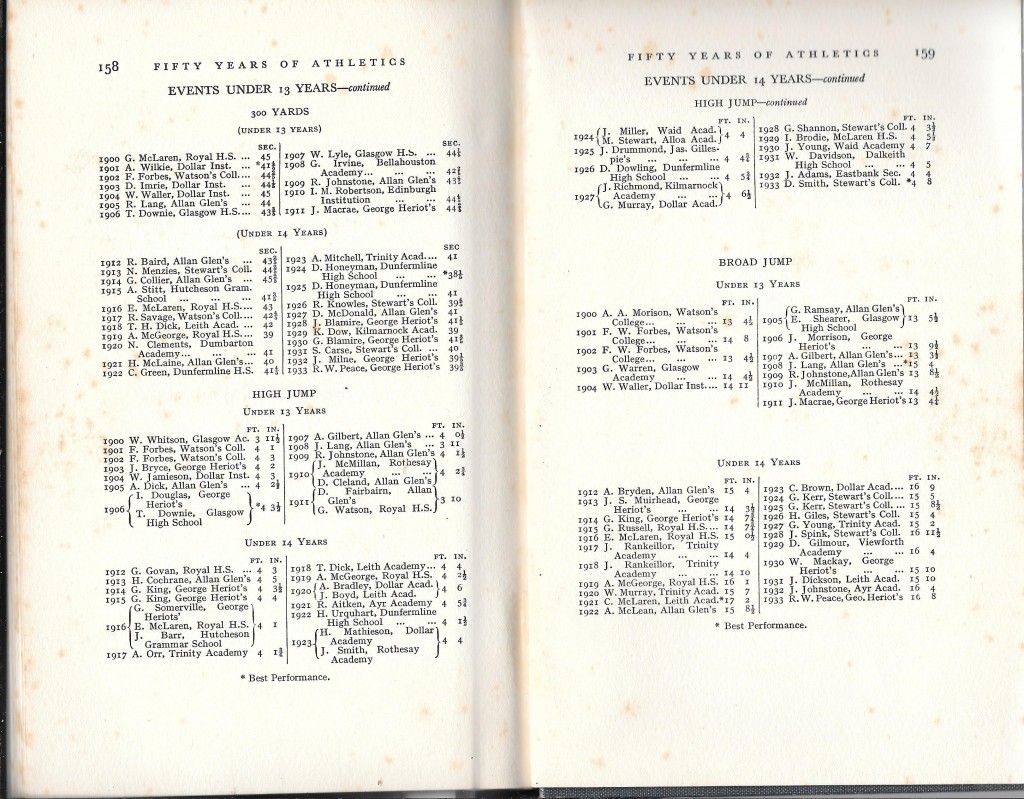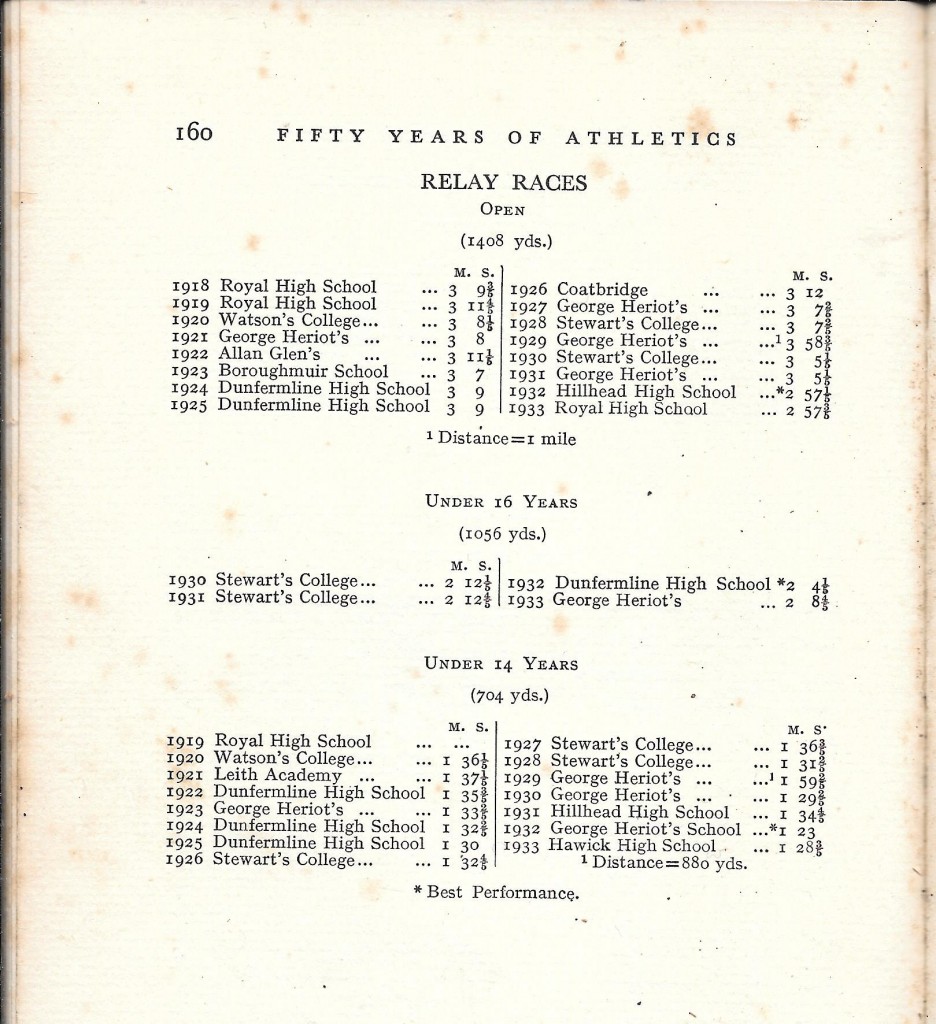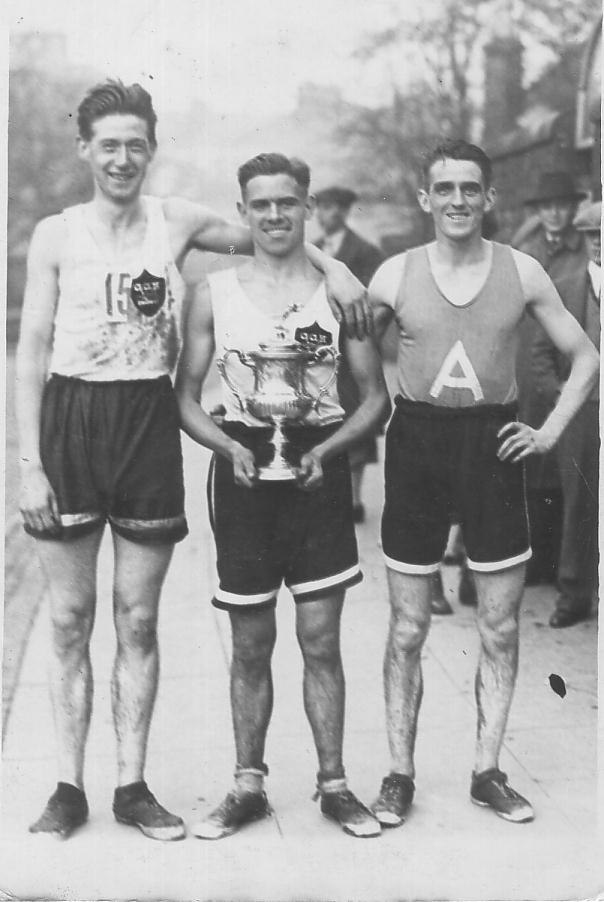
The first three in the 1933 Renfrewshire Novice Championship
Auchmountain Harriers was established in Greenock in 1903. The chap on the right above is wearing the Auchmountain vest – dark blue with a big white A. They trained initially from the Greenock Morton FC clubhouse winter and summer but from 1912 used their new clubhouse at Carbrook Street although track training was done at Cappielow Park right up to the 1950’s with athletes from other Greenock clubs also using that particular facility. Unfortunately the records of the club’s early years are not available and we must just go with what is currently available. Any more information will be very warmly received.
We know that the following were elected at their Annual General Meeting in season 1906/07:
Patrons, James Reid ; Bailie Williamson, ex-Bailie M’Innes, R. G. Adam, R. L. Scott, F. L. Wrede, D. Caldwell, J. Farrell, R. Briton, and G. Morrell ;
Hon. presidents, James Ure, J. Holmes, and A. Christie ;
Hon. vice-presidents, J. A. Ure, R. Muir, R. Mills, and A. M. Campbell ;
President, N. J. Sinclair ; vice-president, N. B. Maclaine ;
Hon. Secretary and Treasurer, F. M’Intosh, 5 Belville Street. Headquarters, Cappielow.
Trainer, R. Smillie
The list of patrons was typical of the time – from the start of the sport of cross-country running in Scotland, all clubs approached noted local citizens, politicians and land owners to be club patrons. This was for several reasons – first, it gave the new club instant respectability to be associated with these people; second, having the land owners onside meant access to country for running over; third it was a source, among other things, of revenue. The patrons contributed to the club by letting them use whatever facilities they had, by making a donation to the club (often only one, two or five guineas) or in the case of politicians having a voice for the club at council deliberations. The ‘trainer’ was the prototype coach. In addition to advising on training, he filled many functions – masseur, physiotherapist and often also advised on diet. His position was important to the club and a good trainer was often approached by other sports clubs including football clubs.
Given the absence of detailed records we do not know exactly what its achievements were but from what we do have, it seemed to be a good, solid but not quite spectacular club. For instance, one of the big races in early Scottish athletics was the Clydesdale Harriers 7 mile cross-country individual and team race. In December 1920 the race was abandoned halfway through because a local farmer had removed the markings, but when it was re-run the following week Auchmountain Harriers was the first of the Greenock clubs to finish when it was fifth team out of an entry of 27 clubs. West of Scotland was one of the top clubs in the country but they were one place behind Auchmountain.
*
Having trained from the Greenock Morton FC ground at Cappielow since their inception, the club built their own clubhouse and the following article appeared in the ‘Glasgow Herald’ of December 30th, 1912.
“New Harriers Pavilion Opened in Greenock
A new pavilion and clubhouse erected by the members of the Auchmountain Harriers Club, in Carwood Street, Greenock, was opened by Sir Hugh Shaw Stewart, Bart. Since the formation of the club in 1903, during which time the members have occupied as headquarters an old pavilion of the Morton Football Club, progress has been impeded by insufficient accommodation, and it is hoped that the organisation, one of the most successful of its kind in the district, will prosper increasingly in its new headquarters.
The new pavilion is of simple and effective design, built on the weatherboard system. A fully equipped gymnasium and other accessories of athletic culture are included in the club’s facilities for the development of the sport.
Mr RK Duncan, president of the club, presided at the opening ceremony. A flag presented by the president was unfurled by Sir Hugh Shaw Stewart who expressed the hope that the club would continue to prosper. When he stood in the presence of such a fine lot of healthy young men, he thought it afforded an excellent opportunity for doing a little bit of business, and he hoped that, when after the running season, when they were feeling particularly fit, some of them might, in the recruiting season, call at the Headquarters of the 5th Argyll and Sutherland Highlanders (Applause). As a memento of the occasion, Sir Hugh was presented with a carriage clock by Mr Ryrie Orr who remarked that their sport of cross-country running was entirely free from very objectionable features attributed to other sports. The fine nobility and beauty of football was being spoiled by the betting and gambling associated with it. (Applause) The members of Auchmountain Harriers afterwards took part in a run with members from Bellahouston.”
The notion of athletes getting fit during the summer and then heading off to join the Army at the start of the cross-country season was a new one to me. But it was 1912 and the war of 1914-18 was looming. The men of Greenock and Auchmountain played their part and several lost their lives in the war – two in one day on 22nd April 1916, John Gillespie, a Lance Corporal in the Argyll and Sutherland Highlanders and Hugh C Smith, in the Seaforth Highlanders.
At this time the relevant District was the West District and the first ever West District Relays were held in season 1925/26 where Auchmountain fielded a team that was ultimately unplaced. There is no record of them competing in these relays but that was not peculiar to them: it was a very big area to be covered by a single championship and many other clubs, including the other two Greenock clubs, were infrequent competitors in these races. Then in 1929-30 the West District was split into the Midland District and the South-West District with all the Greenock clubs, including Auchmountain, being part of the latter body. In the first season of the new event, they finished twelfth with their runners being W Richardson (15:20), J King (16:25), N Preston 16:58 and H Gray (16:32). Any disappointment at the position would be eased considerably by the fact that Wellpark Harriers finished thirteenth just two seconds behind them. Two years later they finished ninth with the runners being W Richardson (16:22), J Gibson (17:18), J Pettigrew 16:30) and AL MacDonald (16:30). There were no South West District relays for the next two years and on the days on which the other Districts held their relays, the clubs in Ayrshire, Renfrewshire, etc held club races and the Auchmountain championship held in 1933 over two and a half miles from Carwood Pavilion was won by AG McPhail in 14:31 from A McDonald (14:48) and J Boyle (15:23) with J Richardson (15:52) fourth. They were a typical Harrier club of their time and included a team race within the race with the winning squad being AG McPhail 1, J Stewart 6, and R Parker 13.
Alex McDonald was becoming the man to beat but he was not a long way clear of the club opposition by any means. We could look at the 1934/35 season which was one his, and the club’s, best we will see just that. On 3rd November the National Novice Championship was held at Hamilton Race course with 35 teams competing. Auchmountain was 16th with D McEwan eighth. Good performances both. The Novice Championships were confined to those runners who had not won a race and so most of Scotland’s cross-country men were eligible. The following Saturday, the club held a relay from the club head quarters and the fastest time over the two and three quarters mile trail was R Bottomley in 14:22 from McDonald in 14:28 and McEwan in 14:32. All remarkably close. A week later and there were more relays – just about every club had a relay held as preparation for the Districts. This time Auchmountain’s fastest was McDonald in 14:12 from HC Gray in 14:47 and McEwan (15:02).
The relays were just a week after that and the club was fifth with A McDonald of Auchmountain leading the field at the end of the first lap ahead of A McLean – a future Scottish internationalist – of Glenpark. McDonald’s time was 14:46 with the rest of the team being D McEwan (14:57), J Richardson (15:11) and R Bottomley (15:08). The club’s second team was 13th. It was a good team performance.
There seems to have been no Auchmountain team entered in the Renfrewshire Relay Championship on 30th November – maybe just as well since the result was declared void: the start was delayed for an hour and the last leg was run in darkness! There was a protest after the event, staged at Kilbarchan, about the course marking. Bellahouston was leading by about twenty five yards at the end of the first leg but by the end of the race Kilbarchan, who had been tenth, won ‘by virtue of their local knowledge.’ Auchmountain were well off out of that one! The race was re-run on 15th December with Bellahouston winning by 7 seconds from Greenock Glenpark with Shawfield Harriers third and Auchmountain sixth.
The club 6 miles race was held from Carwood Street on 5th January 1935 and it was won by D McEwan (30:58) from McPhail (31:37) and Richardson (32:09) and this set them up for the Renfrewshire County Championships at Lochwinnoch. Bellahouston Harriers retained their title with Greenock Glenpark second and Auchmountain third. McDonald was third individual and led the club team home. Another fortnight and it was the District Championships at Beith. AK McDonald was a very good runner indeed and this time he won the South-West championship – the only clubman ever to do so. The race was reported in the Daily Record by its athletics correspondent ‘Ggroe’ as follows:
“AUCHMOUNTAIN SURPRISE. A McDonald led Auchmountain to a grand double victory in the South West. Although the success of A McDonald , Auchmountain, in the South Western Championship at Grangehill, Beith, did not come altogether unexpected, the victory of his club in the team race was a surprise. Auchmountain did extremely well to aggregate 122 points, to beat Beith by 25 points, with Kilmarnock, who were much better placed at half distance, third. Until five miles had been covered, the individual race looked like developing into a tussle between P Allwill, Beith, and T McLaren, Wellpark. But when McDonald moved up to challenge over the last two-and-a-half-miles, neither Allwill nor McLaren could cope with the Auchmountain leader’s pace and he won a finely judged race.”
Result: 1. Auchmountain (A McDonald 1, D McEwan 8. AG McPhail 17, HC Gray 27, R Bottomley 28, J McGilvray 41)122 points. 2. Beith (P Allwill 2, G Murdoch 7, W Murdoch 12, J Quinn 30, TJ McAllister 46, A Barrett 50) 147 points.
Times: McDonald 40:23; Allwill 40:41; McLaren 40:56.
Two weeks seemed to be the standard gap and on 16th February the club eight miles championship was run from the Carwood Street pavilion and McDonald won in 52:03 from HC Gray (52:11) and McGilvray (54:37).
The National Novice Championships were held at the start of the cross-country season and the various areas held their own district novice championships. A novice was any runner of any age or years in the sport who had never won a prize at any open meeting. The race for the Greenock clubs – Auchmountain, Glenpark and Wellpark Harriers – was usually held at the end of October. In 1937, for instance they were held at Wellpark and the individual winner was J Thomson of Glenpark, and Wellpark won the team race with Glenpark second and Auchmountain third.
AK McDonald was a significant figure in Scottish athletics, not just Greenock or Auchmountain’s. He ran for the club all through the 30’s and when the 1939/45 war started he was already a fairly senior figure on the SAAA and, especially, the SCCU. In August 1943 there was a meeting in the Blythswood Masonic Chambers of clubs in the Midland and South Western Districtc to consider restarting inter club fixtures. The club delegates supported the principal and the Scottish Cross Country Association – the name of the first ever governing body back in the 1880’s – with two aims: first, to offer cross-country competition to suit the current demand for those at home …, the Scottish Youth at school and beyond, and for all interested servicemen stationed in Scotland; and second, to preserve cross-country running in Scotland and present it in as healthy a state as possible to the post-war era. The office bearers of the Association were Dunky Wright, president; John Cuthbert (Garscube), vice-president; Alex K McDonald (Auchmountain) secretary/treasurer. The organisation staged various races and runs at many venues around central Scotland, including Auchmountain Harriers clubhouse. In the spring of 1944 the Scottish Marathon Club was founded and Alex McDonald was one of the founder members. He went on to become President of the Scottish Cross Country Union in 1960/61 (not the first Auchmountain man to hold that office – W Murdoch was president in 1932/33 and represented the SCCU on the SAAA Committee) which was ironically the year that Auchmountain went defunct.
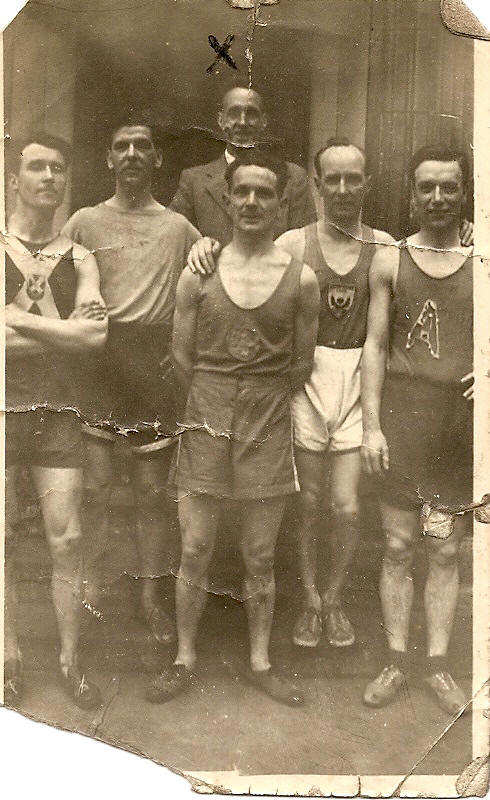
The inaugural run of the Scottish Marathon Club at Pollockshaws Baths:
J Lindsay (Bellahouston), W Shields (Auchmountain), J McNamara (Maryhill), J Millar (Shettleston), Dunky Wright, JS Richardson (Auchmountain).
Unfortunately. although they took part in all the County as well as he South Western District championships and relays, they did not always support the national championships in the inter-war years. They were not unique in this, many clubs had club races held on the same day as the national. Greenock Glenpark Harriers was the most successful club in the area at the time and appeared consistently at the nationals, but the other local rivals, Greenock Wellpark Harriers did not turn out teams in the national in most years either.
On District Championship day the following year, Auchmountain’s held a pack run with two packs covering six miles from headquarters with the top runners exempted because they were doing a fast two and a half miles with J Lynch being fastest, ahead of AG McPhail.
In the Scottish national championships AK McDonald ran all through the 30’s as an individual, finishing down the field. In some years there was an incomplete team and in others there was no team at all from Auchmountain. eg the seniors were limited to McDonald running in 1937/38 (58th), and McDonald (24th) and Willis (176th) in 1938/39. The young athletes in the Youths team did well in the years leading up to the war:
1937/38: 6th team: W Stewart 5th, J McKinven 39th, A Willis 42nd, I Sinclair 54th.
1938/39: 5th team: I McKinven 12th, A Adam 16th, A Taylor 42nd, I Sinclair 45th.
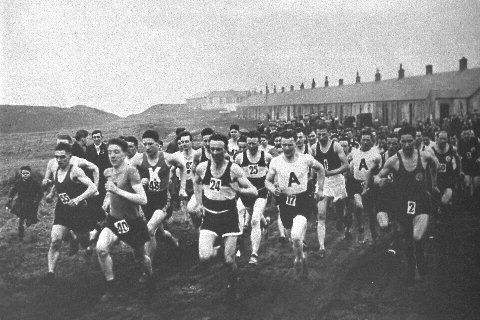
A puzzle picture.The start of the Ayrshire championships at Benwhat in Ayrshire, 1938. Auchmountain did not usually run in the Ayrshire Championships, and the vests of number 17 and his fellow were white with black letters.
“The Scots Athlete” was started up by Walter Ross in Glasgow in 1946 and was a wonderfully detailed history of the sport of athletics, with an emphasis on endurance running, for just over ten years. The very first issue of the magazine had an illustrated report on the Dundee Relay Race of 6th April 1946 in which Auchmountain Harrires was third behind Shettleston Harriers and Garscube Harriers teams but ahead of Dundee Thistle Harriers and Dundee Hawkhill Harriers among others. The drawings used to illustrate it included John McKinven and AK McDonald of Auchmountain and the short report read: “The relay was held on Saturday, 6th April, 1946 and the holders Maryhill Harriers were unable to send a team. This took some of the spice from an otherwise successful race. Shettleston Harriers with three internationals in their team were too good for the main opposition of Garscube Harriers and Auchmountain Harriers. Though run in brilliant weather, the very high wind must account for the slowness of the times in comparison with the existing lap records shown. Shettleston B dropped out at the end of the second lap after a fine effort by Paterson on the first leg. No doubt he was carefully coached by his club mate Willie Connor, but Paterson is just a young lad and shows distinct possibilities. Alex McDonald (Auchmountain) pulled his club up well in the third lap and was three seconds faster than Harry Howard.”
The Greenock club’s places were: 1st stage: J McKinven 3rd; 2nd stage: Bryce 4th; 3rd stage: A McDonald 3rd; 4th stage: Smith 3rd. The second issue of the magazine intimated that the club was to hold a sports meeting at Cappielow Park on Monday 24th June with a programme to include a 17 miles road race and an invitation relay. At this time, there was a Scottish Athletics Points League with points of 3,2,1 for first, second and third in all events, handicap or scratch, at all open sports meetings and Auchmountain had athletes ranked in this league. The club was indeed going well after the War. By the end of July they had a total of 35 points accumulated with half the season still to go. The Scottish Cross-Country Association was a body set up to regulate the sport at the end of the War and never intended to replace the NCCU and it would up its business at the start of the winter season 1946/47. The Secretary was AK McDonald and he sent a letter to the “Scots Athlete” wishing it well and enclosing the ‘residue of the estate’ (ie the money that the SCCA had in the bank) which amounted to only ten shillings. As the Editor said, it showed the simplicity of the organisation which had done so much and had such power for a few years of transition from war to peace.
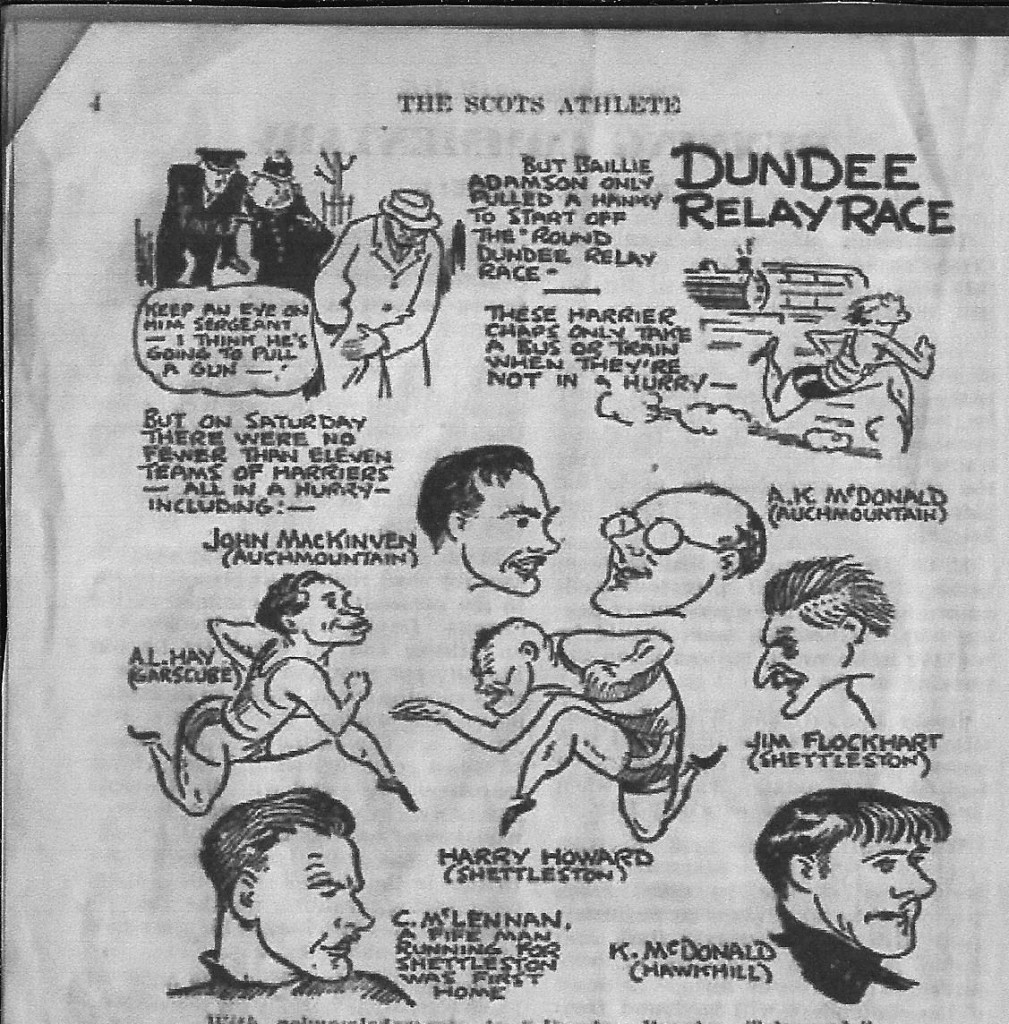
The South West Cross-Country Relay Championship took place on 7th December, 1946, at Johnstone. At the end of the first leg, the three Greenock clubs were in the lead – McLean of Glenpark leading Bownes of Auchmountain and Rippingale of Wellpark; on the second leg AK McDonald took Auchmountain into the lead followed by Kilmarnock and Wellpark; Kilmarnock passed Auchmountain on the third stage but the club held second with Glenpark third and at the end of the race, it was J Reid of West Kilbride in the lead with McKinven of Auchmountain second and Sinclair of Wellpark third. A hard fought race with 5 teams featuring in the first three at various times but the Carwood Street club was always in the first two. Their second team finished sixth – eight men ran well for the club that day. The juniors all had a great day at the races on 1st February, 1947, in Ayr when they contested the South Western District Junior Championships: with no one in the first three, they won the team race from West Kilbride with 51 points against 75. The team was made up of J McKinven 4, W Stewart 6, J Bownes 7, J Richardson 8, A McLean 12, J McLean 14 – wonderful packing by the first four in particular. The magazine added separately in the same issue the following: “When winning the South Western Championship at Ayr, Auchmountain only fielded 10 men – comprising nine former club novice championsand their President. A unique record! The President, by the way, failed to make the counting six.”
When it came to the national championship, however, – the first championships after the war – on 1st March, 1947, the seniors unfortunately had an incomplete team of finishers (45th, 65th and 66th) but the Youths team was twelfth with runners 47th, 48th, 52nd and 55th.
It must have been some club: in the May 1947 issue of the same magazine, club secretary A Lambies wrote th following letter: “I enclose a copy of our club song, which was written a number of years ago by one of our members. I have never seen anything in the magazine about club songs, and I thought it might be interesting to find out if other clubs had songs of their own.”
For the Empire Exhibition in 1947 the Scottish Marathon Club organised a Fiery Cross Relay from Edinburgh to London and among those taking part was AK McDonald of Auchmountain who ran a total of 23 miles with the cross.Clydesdale Harriers prestigious Youth Ballot Team Race was held on 8th November in Clydebank and Auchmountain runner J Bownes finished second to Harry Fenion of Bellahouston and one place ahead of Alex McDougall of Vale of Leven. A few years later, they would both represent Scotland in the Empire Games Marathon at Cardiff and indeed Harry would win the SCCU championship and SAAA Marathon titles in the course of a wonderful career. P McIntosh of Auchmountain was 18th in the same race but it is clear that the club runners were holding their own with some of the best in the country.
The first championship[ of the winter was the national novice championship held at Pollok Park in Glasgow on 22nd November 1947, Auchmountain had seven runners forward and the team was 17th out of 27 entered with some clubs having incomplete teams.
The South Western District Relay was held on 6th December at Beith and Auchmountain were the defending champions. However, Emmet Farrell commented that they were suffering from the depletions of a winning team becoming Seniors, and they could only finish fifth and tenth behind Glenpark’s winning team. The Renfrewshire Championships took place from the club’s own headquarters on 24th January 1948 and they were third behind Bellahouston and Glenpark. The Youths team went one better and finished second. The South Western District Junior Championships were held from the Kibble School in Paisley on 7th February 1948 and, with many of the previous year’s team up an age group, the could only finish fifth with R Smith in seventh their first runner. In the National at Ayr the senior team was twelfth – McKinven 43rd, W Lindsay 51st, J Bownes 60th, J McLean 91st, W Carson 96th and I Graham 111th with three non-scoring runners in McNaughton 120th, D Livingston 121st and W More 124th. The youths team this time was 8th, led home by Wilson in fourth place, followed by P McIntosh 36th, A Smith 38th, C Flacherty 51st and A Mills 76th. This was to be the club’s best national post-war.
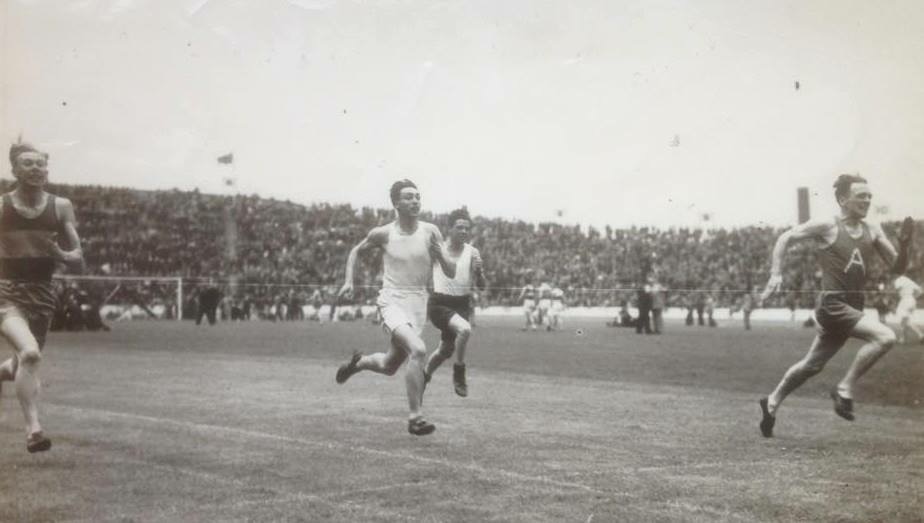
.Rangers Sports 1948
The season of 1948/49 started as usual with the four man McAndrew Relays at Scotstoun and there were two teams from Auchmountain which finished eleventh and 34th out of 41 complete teams. The on 20th November 1948 the national novice championship was held at Hamilton Racecourse and Auchmountain had a team forward that, led by J Graham, finished 28th. A week later the South Western District Relays were held from Wellpark’s Greenock headquarters and Auchmountain had two teams forward that finished fifth and twelfth of 20 teams from 13 clubs entered.
The District 7 Mile Championships were held on 5th February at Kilmarnock and the club finished fifth out if nine With W Lindsay being their leading runner, finishing in 4th place, of the ten who represented them. In 1949 there was a large number of Auchmountain Harriers runners listed in the programme for the national cross-country championships – 15 seniors and 7 youths – but no Auchmountain team finished in the national. The names were there but many were of pre-war vintage. Those entered were – W Lindsay J Freeman A Mills J Bownes I Graham W More JK Bryce J McKinven J Morrison W Carson D McNaughton RG Smith with A McLean, J Wilson and J Pye as reserves; the Youths entered were W Bownes C Facherty P McIntosh R Clark J Kean AG Smith and R Scott as reserve. Only one senior (W More) ran and the junior team was seventeenth out of eighteen.
The following winter the team in the McAndrew Relay on 1st October was J McLean, R Smith, J Bownes and W Lindsay and they finished 32nd. On 5th November at West Kilbride the club team – Smith, Lindsay, McLean and Pye – was twelfth in the District Relay and a week later they hosted the Renfrewshire championship on their own course. The team was not in the first three but W Lindsay had seventh fastest time of the day and the club’s organisation and course were praised by Association secretary Alex McLean. In the Scottish Youths cross-country championship on 3rd December 1949, the Auchmountain squad was nineteenth with Ramsey, McLeod, Findlay and Kerr being the quartet. Into 1950 and on 5th February the club was fourth in the District championship at Paisley with a team of W Lindsay, JK Bryce, J Bownes, W Carson, C Facherty and AK McDonald. The numbers seemed to be there in the club, but on 4th March at Hamilton in the national cross-country they were represented by only one senior, W Lindsay 43rd, and one junior, W Carson 75.
It if is the first Saturday in October, it must be the McAndrew Relay and on 7th October 1950 the Auchmountain team of Morrison, McFarlane, McLean and Lindsay was 33rd of 43 teams to start the season’s competition. At the end of that month (28th) in the Renfrewshire championship relay, they were 10th of 19 teams and again W Lindsay was their fastest man, seventh quickest overall for the course. Unfortunately, a week later in the South Western District relay the club fielded an incomplete team and failed to finish. No matter where the club team finished, W Lindsay always ran well, and on 16th December he ran in the Inter-Counties championship for the Renfrewshire team. He finished 11th to be the first runner for the county to cross the line, with the next man being 26th. A the start of the year in the Nigel Barge Road Race, organised by Maryhill Harriers in Glasgow, there was a club team out which finished 13th, the runners being Lindsay, Morrison and W More. Lindsay finished 11th in the Renfrewshire cross-country championships on 20th January in a race from the Wellpark HQ and the six man team finished sixth. In the Youths race, the team of Findlay, Forsyth and Allison was second behind Bellahouston. The District championship was held at Dalmellington in Ayrshire on 3rd February, 1951, and there was not a single Auchmountain runner in either the senior men’s race or the youths’ race. Came the national and there was only Lindsay from the club running at all and he was 41st.
Not a good year for Auchmountain Harriers and championships: the club clearly had enough men and youths to make up teams for District and National championships, and they had quality in the form of Lindsay among the seniors and in the team that was second in the County relay. In fact as far as the National was concerned no one from the club ran in 1952, 1953, 1954, or 1955.
Winter 1951/52’s version of the McAndrew relay did not feature any team from Auchmountain but in the Renfrewshire relay on 27th October, they were ninth with a team of W Bownes, J Cairns, J Ramsey and S McIntosh. An improved performance saw the team ninth in the District relay championship at Dam Park in Ayr one week later with one change in personnel – J McLean for J Ramsey. The actual cross-country championships for the county were held at Pollok in Glasgow but there were no teams from the club forward – at least none in the published results. By now the Renfrewshire events had come to include the Glasgow Police AAC as well as Bellahouston (there were no Glasgow championships at this point) but some other teams such as Kilmarnock were competing in the Ayrshire fixtures. The District was also suffering from lack of entries and there were no teams from Wellpark, Auchmountain, West Kilbride, or Bellahouston in the championships at Paisley on 2nd February, 1952. As has been stated above, there was not a single runner from Auchmountain Harriers in the National of 1952 – and by now there were three races – seniors, juniors and youths.
Came winter 1952/53 and there was no team from the club in the McAndrew relay and there was not a single runner in the Clydesdale Youth Ballot Team race for the second year in succession. In the county relay championships on 18th October at Kilbarchan, the club had two teams of four out which finished ninth and 17th, indicating that the runners were there if they would turn out. There was a senior team in the District relay on 1st November but it could only finish twelfth out of fourteen clubs. The actual District championships were on 31st January 1953 and there was no team forward but the club had four individuals – J Cairns 52nd, P McIntosh 54th, J McLean 62nd and W Shields 69th. Six were required for team position. There were no Youths forward. The story was the same for the County championships in February when four men ran – Cairns 33rd, McLean 46th, Shields 49th and D Mangan. There was one runner in the Youths race – J Campbell who was 13th.
On 7th November 1953 in the District championships, Auchmountain Harriers was eighteenth out of eighteen clubs competing. On 6th February 1954 there was no team in the senior race of the District championships with only W Shields competing and not even an individual in the Youths race. With no one in the National, it was not a healthy scene for the Greenock club. Season 1954/55 started with the McAndrew relay and as in ’52/’53 there was no representation from Auchmountain. In the Renfrewshire relay towards the end of the month they were fourteenth out of fourteen teams competing. In the District championships on 5th February 1954 there was no team but one individual running in the Auchmountain vest – W Shields was 51st and there were no Youths running at all. The national was bereft of club runners.
In the South-Western District relay championships in November 1954, the team was sixteenth out of sixteen but in the District championships at the end of January there were no Auchmountain runners in the races: the event was staged at Johnston and distance to travel might have been an issue but the race was won by Greenock Wellpark and if they could travel, then it should have been possible for their neighbours. Season 1955/56 was not significantly better with the absence of Auchmountain runners becoming chronic.
This was not a happy state of affairs and the club determined to take some steps to deal with the situation, and the following article appeared in the Greenock Telegraph at the start of the 1956/57 season.
“AUCHMOUNTAIN HARRIERS’ DRIVE FOR RECRUITS
Mr James M Lynch, Auchmountain Harriers president is leading a drive to rejuvenate the club and recapture some of its lost prestige. He is being supported in his endeavour by vice-president Mr John McLean, and Mr William Shields, 100, Rankin Street. The latter has been associated with the club for more than 25 years and has become secretary. He has as his assistant Mr AK McDonald.
Mr Alex Lambie, Port Glasgow, who has given good service as treasurer during the past ten years is to serve another term. Control of training and coaching has been undertaken by Mr Pollock McIntosh (captain) and vice-captain Mr Jas. K Bryce. The committee is completed by Messrs TM McKay, WA Docherty, N Preston, senr, N Preston, jnr, and Ian Wilson.”
T McKay is an interesting member of the club in that before the first world war he was a fairly successful race walker and he was an active club official right up to the late 50’s.
The national at the start of 1956 had not been a happy one for the club either with only two juniors representing it at Hamilton – Ian Wilson had been 89th and N Preston 91st. But whether it had been the result of the recruitment drive or not, the national in March 1957 was a much, much better day. In the senior race, SP MacIntosh was 158th; In the junior (U20) race, N Preston was 91st, A Wooler 105th; and the youths team was best of all with H McWilliams 14th, T More 66th, L Lyons 68th, W Loughray 82nd to see the team finish in 11th with a man to spare, J O’Donnell was a non scoring runner in 90th.
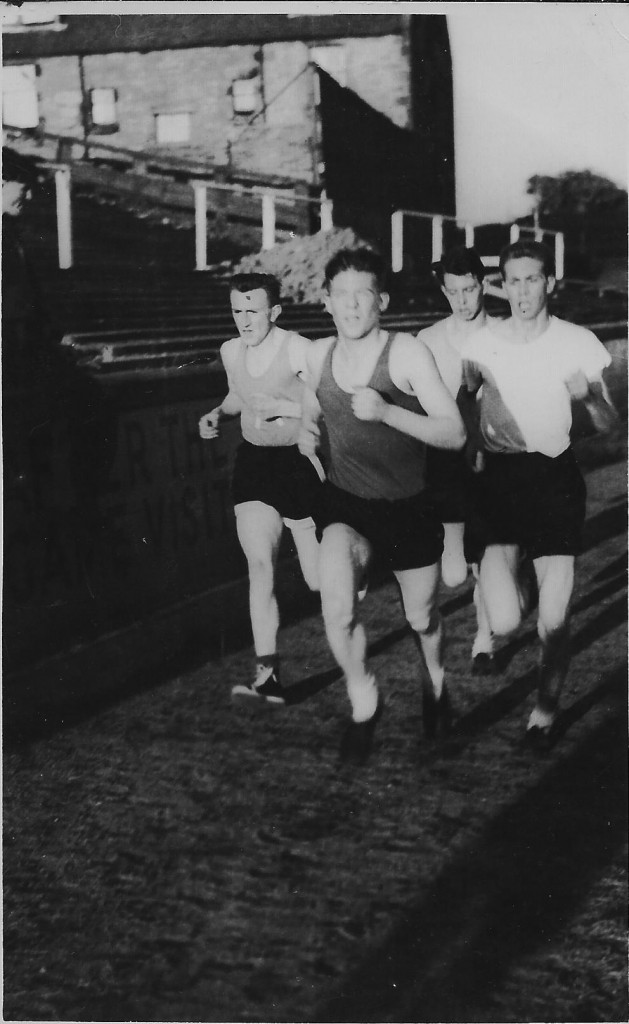
Track training at Cappielow: Harry McWilliams in front with the dark vest
Harry McWilliams, who led the team home, was a real find for the club – he was to be one of their best post-war runners and an athlete who would go on to have a career in the sport well into the senior age group with Greenock Glenpark Harriers. He appeared on the scene in March 1956 after some very good performances in ATC races – seventh in a field of 195 in the Glasgow championship, and was selected to race in the ATC cross-country international at Turnhouse in Ayrshire. He was one of a good number of Under 17’s to represent the club that year – Willie Loughran from Port Glasgow, Tom More, youth champion the year before, John Preston, Joe O’Donnell, Laurie Lyons and Tom Barrett all supported the club in domestic races as well as championships and open races such as the Clydesdale Harriers and Bellahouston Harriers Helen Corbet youth ballot team and individual races. In Bellahouston he had a particularly good race finishing fifth, one stride behind fourth pace in a good field. The club held the normal series of races from their headquarters at Carbrook Street: the Youths cross-country handicap where Harry was first individual and first in the handicap, novelty team races from Carbrook Street, Senior Championship (won by I Wilson), Juvenile Championship (Billy Crerard), Five Miles Handicap (Pollock McIntosh). Six Miles Handicap (McIntosh), Five Miles Road Handicap (Alistair Wooler), Youths three miles handicap (L Lyons), Juvenile Handicap (F Gatens), 2.5 miles cross-country handicap (McWilliams) and the Dalrymple Trophy was awarded for the for most meritorious performance (H McWilliams). The Dalrymple Trophy winning performance was for McWilliams’s run in the South Western District cross-country championship at Irvine where he was sixth after slashing his leg open from ankle to thigh on a barbed wire fence early on in the race. The Youths team was third in that race with Lawrie Lyons 15th and Tom More 19th. The report in the local ‘Telegraph’ also said that “while not exactly setting the heather on fire, Auchmountain Harriers gave their best performance for years in the championships.” … “Veteran Jim Bryce ran particularly well in his untrained state to lead the club home. He was 49th. SP McIntosh (50), I Wilson (55) and N Preston (61) are all capable of better things. Auchmountain are especially pleased with the efforts of A Wooler (63) and SE Hagen (64) who ran doggedly and finished the course to give the team fifth place.”
The club was clearly in a healthy state with good numbers of seniors available to them, a promising Youths section, a complete committee which was a good blend of experienced men and younger newer members and a full racing programme. Nor were the club activities were not restricted to the winter season – training for the summer was at Cappielow Park, the home of Greenock Morton FC, which was just over the railway bridge from Carwood Street. Club members took prt in local and nationa open competition.
The season started with the Renfrewshire Youth Panel athletic badge meeting where Harry McWilliams was second in the half mile and third in the mile. Like any other club in the 1950’s, the club held championship and handicap races for club members and right at the start of the season, they had races handicap and scratch for Juveniles, Youths and Junior/Senior categories over distances from 100 yards to three-quarters of a mile. McWilliams continued to excel in ATC competitions – second in the Scottish 880 yards, he was third in the British championship at Uxbridge in July. At home, David Caldwell won the open 440 yards at Kilwinning Sports and took the senior 100, 220, 440 and 1320 yards in the club championships in 11.0, 24.5, 57.9 and 3:25. The other age group competitions were won by Crerand in the youth events and Ian Hamilton in the juvenile championships. In the Renfrewshire County Championships, the new sprinting ‘find’ of the season, Hugh Livingstone won the Youths 100 yards as well as finishing fourth in the 880 yards. David Caldwell was third in the junior 100 yards and McWilliams wcarrying the torchas unplaced in the final of the 880 yards. The club was performing at a reasonable level on the track as well as over the fields of winter and numbers were healthy. There was a Scotland-wide campaign to impress upon the population the benefits of having X-rays taken with national papers having lengthy features on the subject and there was a relay race involving runners from all clubs to publicise the campaign locally. Auchmountain played their part in this with Ian Wilson, William Shields, Jim Bryce, Pollock McIntosh, Harry McWilliams, David Caldwell and Willie Loughran with five from Wellpark and one from Glenpark also involved.
After that good competition year, things looked good for winter 1957/58 which started with a two and a half miles cross-country race on each of two weekends where the traditional officials of starter A Lambie, judge W Shields and timekeeper T McKay were on duty. In the Renfrewshire cross-country relays in November, the A team of Pollock McIntosh (14th at the end of the first lap), David Caldwell, Ian Wilson and Harry McWilliams finished seventh, three seconds down on sixth, with the B Team of Wooler, Barrett, McLean and Bryce seventeenth. The programme of club championship and pack runs continued with the Six Miles championship was won by McWilliams (43:54) from McIntosh (44:23), Caldwell (45:51) and Wilson (46:59) with McWilliams also winning the handicap race. In the South West championships at the start of 1958, T More was third in the Under 17 race and W Crerand was second in the Under 15 race but the race was declared void because a number of finishers were not recorded – a shame for the first three who were recorded. When it came to the national championships at Hamilton, the club was not well represented by the senior athletes – despite the numbers available to them, only Pollock McIntosh turned out in the and finished 141st. There was a full junior team though which finished 16th and included McWilliams 63, Wilson 84, Caldwell 98 and Wooler 108. The youths squad finished 14th: Sheridan 25, More 46, O’Donnell 83, Preston 97; The boys team was 7th: Smith 13, Crerand 34, Findlay 48, Knight 80, and there was even a non-scoring runner, W Watson 102.
The summer ’58 season started with a one mile scratch race at Cappielow which was won by McWilliams from newcomer Bill Youden after a titanic struggle with Findlay and Sheridan dead-heating for third place. The reason for a race on the very first track night of the year was soon apparent – there was to be a race at half-time at the Morton v Stirling Albion match the following Tuesday. This was to be a handicap race to entertain the crowd. The report read:
Pollock McIntosh took the lead shortly after the gun and cut out a fast pace ahead of D Caldwell, H McWilliams and I Wilson. At half-distance Wilson went to the front but he was only allowed to remain in this position for half a lap when youngster David Smith decided that the pace was too slow and shot ahead. He stayed in front for over a lap when he was overtaken by Harry McWilliams and David Caldwell who were now going all out for the tape. Caldwell tried desperately to overhaul the club champion but McWilliams who had nursed himself in the early stages now had all the “stops” out and raced on to win by 15 yards in 4 minutes 41 seconds. D Caldwell was second and W Loughrey staged a late burst to take third place just ahead of the youthful Smith. SP McIntosh was fifth, Ian Wilson sixth, Wm Youden seventh and Joe O’Donnell eighth.”
There had been 12 runners in the race: McWilliams had been off scratch, with Wilson and Caldwell off 10 yards, Tom More off 20 yards, Loughrey 30 yards, Smith 40 yards. McWilliams was the man to beat all summer but by the start of the winter season he was clearly the best endurance runner in the club.
Winter 1958/59 saw him win all scratch races from two miles to ten miles: the longer the races, the more he won by – the ten miles race was won in 53:30 from 57:13. Auchmountain boys team won the Renfrewshire county cross-country championship at the start of 1959 but the club does not appear in any published results for the District Championships in January 1959 and there were only one Auchmountain vests to be seen in the senior national at Hamilton on 28th February – SP McIntosh in 99th. The youths were out in slightly bigger numbers – that good club man Harry McWilliams was 42nd, Jim Sheridan 90th and and D Caldwell 100th. In the Boys race W Watson was 85th . The lack of seniors prepared to travel from Greenock to Hamilton was surprising. Was the answer to be found in a paragraph at the end of the report on the annual prize giving? It read:
“Auchmountain Harriers is primarily a club which seeks to achieve top-grade health for the youth of the community who are interested in running – the best health-giving body builder of all pastimes.”
When the election for the committee for 1959/60 was held, TM McKay was President, A Lambie vice-president, W Shields secretary – the main positions all in the and Hugh Livingston safe and experienced hands of long-time club members, while Ian Wilson was assistant treasurer, David Caldwell was assistant secretary, SP McIntosh captain and H McWilliams vice captain. It was a nice division of young and old. At the time it was clear to all that the Carbrook building that had served the club so well was in dire need of treatment and a Repair Committee set up – Pollock McIntosh was the convener with Alistair Wooler, David Caldwell, Willie Loughran, Harry McWilliams, Joe O’Donnell and Hugh Livingstone as members. Elected to the Renfrew AAA, SAAA and NCCU were AK McDonald and JK Bryce. The club was a fully functioning organisation with no shortage of members to fill all the positions and able to take a full part in the governing bodies of the sport.
One of the biggest awards in Greenock athletics was the Lithgow Trophy. It had been awarded by Mr Henry Lithgow in 1947 for annual competition between all the local athletic clubs with one of the few conditions being that the tournament be held in Port Glasgow. In 1959 Greenock Wellpark Harriers had won it for each of the previous eight years but it was felt that the contest would be close this time round. With only one event to go – the Mile Medley Relay – the points totals were Auchmountain ten and a half points, Wellpark ten and Glenpark nine. Any one of the three clubs could win the Trophy. The ‘Telegraph’ read:
“The last event was a one mile medley relay race and the distances to be covered in order were 880 yards, 220 yards, 220 yards, 440 yards. The atmosphere was tense as the 880 runners lined up. Wellpark were pinning their faith in many times cross-country internationalist Tom Stevenson, Auchmountain hopes were centred on youthful club champion Harry McWilliams, while Glenpark had to call on a rather tired Jim Spence – not long recovered from his mile race. Stevenson went into the lead at the gun with McWilliams two yards behind and Spence a similar distance away third. These runners had four laps to do. At two laps the order was the same and then the experienced Stevenson forced on more pace in an endeavour to pull clear of his younger rivals. The gap started to widen but McWilliams was quick to seee the danger and gradually closed in again. So it remained until 150 yards to the change-over when the Auchmountain boy, with the judgment of a veteran, decided to make his effort. He drew level with Stevenson in the back straight but Tom was not going to be easily passed and he spurted too. Shoulder to shoulder they raced to the bottom bend. Then young Harry, now at a disadvantage running outside on the bend, found some more pace and forced himself into the lead before the home straight was reached. But he was having no runaway lead. Tom Stevenson, although now used to longer distances, refused to be dropped and hung on with such determination that there was only two yards in it at the line. Over the first 220 yards there was another Skirving-McSwein duel and there might well have been an iron tow-bar between these two athletes so perfectly were they matched. George Barrett maintained this two yard Auchmountain lead from Chick Aitken (Wellpark) over the second furlong. Glenpark had dropped back but over the final 440 yards the race upfront was a real hum-dinger as John Cairns of Wellpark twice tried to slip past David Caldwell on the inside. During the final lap Cairns still made efforts to take his club to the front but with 150 yards to go Caldwell surged away to a lead which grew to twenty yards at the tape to give Auchmountain a glorious victory in the race and in the contest. Auchmountain’s colts had triumphed over the seasoned strength of Wellpark to break an eight year monopoly and capture the Liddell Trophy. “
The younger Auchmountain team included several runners who were still at school while the Wellpark team had Frank Stevenson and Duncan McSwein among an altogether more experienced Wellpark squad.
Away from club races which continued as before, winter 1960 started with the South West District Championship Relay at Paisley with the Senior team of Sheridan, McIntosh, Caldwell and Wilson finishing in eleventh place. The Renfrewshire championships were held at Gateside, the headquarters of Wellpark Harriers, on 12th December where the Youths team was second, having been led home by D Smith in second place, 35 yards down on the winner. The District Championships were held at Beith on 23rd January at Beith and only two seniors ran – Jim Sheridan was 31st and Harry McWilliams 37th. The Youths team was third with D Smith fifth, D Hodelet ninth and T Knight tenth. Dick Hodelet in ninth was a real talent and would go onto great things in athletics as a senior runner. In the national at Hamilton on 5th March there were no seniors running at all but Harry McWilliams in 35th and J Sheridan 40th turned out in the Junior race. As far as the youths were concerned, Hodelet turned the tables on Smith by finishing 31st to Smith’s 41st with Knight finishing 85th. The lack of a fourth man meant that the club had no team. It was a disappointing national for the club, especially after the previous season. 1960/61 was the year that AK McDonald of Auchmountain, the winner of the 1935 South West District championship and elder statesman of the club, was President of the Scottish Cross-Country Union – a well deserved honour for the man who had represented the club so well as a runner, as an official who refereed the national cross-country championships and as an administrator, being the club representative on Renfrewshire, South West District, SAAA and SCCU levels.
Top man on the track next summer was young Dick Hodelet who ran well in open competition. For instance, on 11th June at Ibrox in the Glasgow Police Sports he won the Junior 880 yards handicap, off 38 yards, from Jim Finn of Motherwell in 1:56.5; on 25th June he won the 880 yards at the Stewarton Bonnet Guild meeting, again off 38 yards, in 1:58.1. None of the other Auchmountain runners appeared in the results nationally that summer.
In the winter of 1961/62, the south west district relays there was no Auchmountain team among the results but in the District Championships, their youths were 3rd team with the runners being Smith 5th, McLean 12th, Knight 13th. Came the national at Hamilton on 4th March 1962 the youths were again the sole club representatives with only T Knight 88th and F McLean 92th finishing the course.
And that was where the Auchmountain story ended. By the national of 1960/61 runners like Hodelet, Sheridan, McIntosh and McWilliams were running for Greenock Glenpark. Hodelet became one of the country’s best ever half-milers, McIntosh emigrated to Australia and died in Adelaide on 27th May 2016, Sheridan and McWilliams ran for a long time with Greenock Glenpark Harriers for whom they were loyal club men as they had been with Auchmountain.
Just why the club went is not known to me – I’d be delighted to hear from anyone with that information – but it seemed to be doing well. It ran a complete programme of club events winter and summer, the runners were taking part in open meetings and championships, the younger members (particularly the Under 17 age group) were particularly successful and there was a good, mixed committee – indeed Mr McDonald was President of the Scottish Cross Country Union in 1961/62. Founded in 1903, it folded in 1960. It is a puzzle to me why it collapsed. It was doing comparatively well – from the depression of the early 50’s, the situation had been turned round and in 1960/61 the team was relatively strong with youngsters led by Dick Hodelet and a senior team that had won the Lithgow Trophy. One suggestion that was put forward was that the Carbrook Street premises was ina state of serious disrepair and they could not afford to repair it: but most clubs in Scotland used local authority facilities – eg swimming baths were headquarters for Bellahouston Harriers, Clydesdale Harriers, Dumbarton AAC, Springburn Harriers and many more. There might have been possibilities there but no doubt they were all gone into. A good, solid club had gone to the wall.
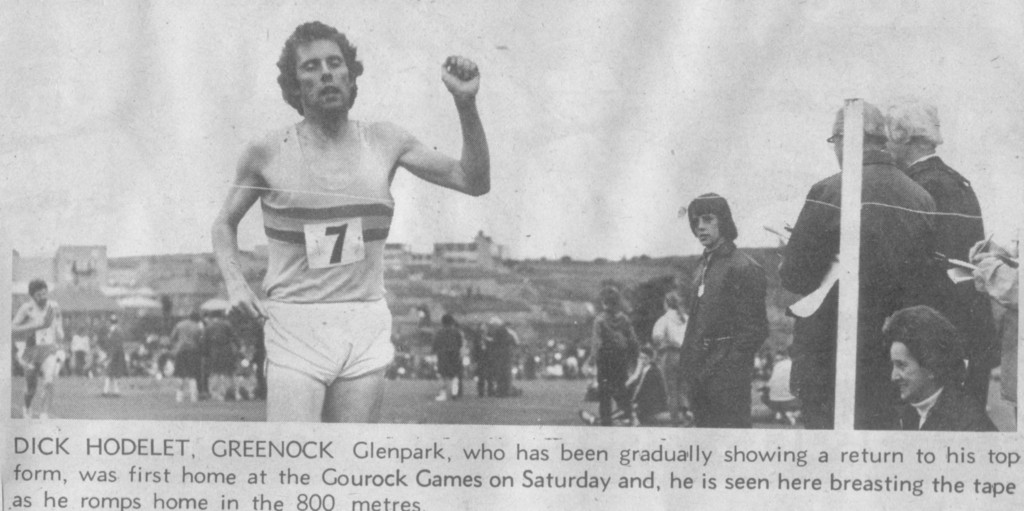
Photo from the Gourock Games website.
